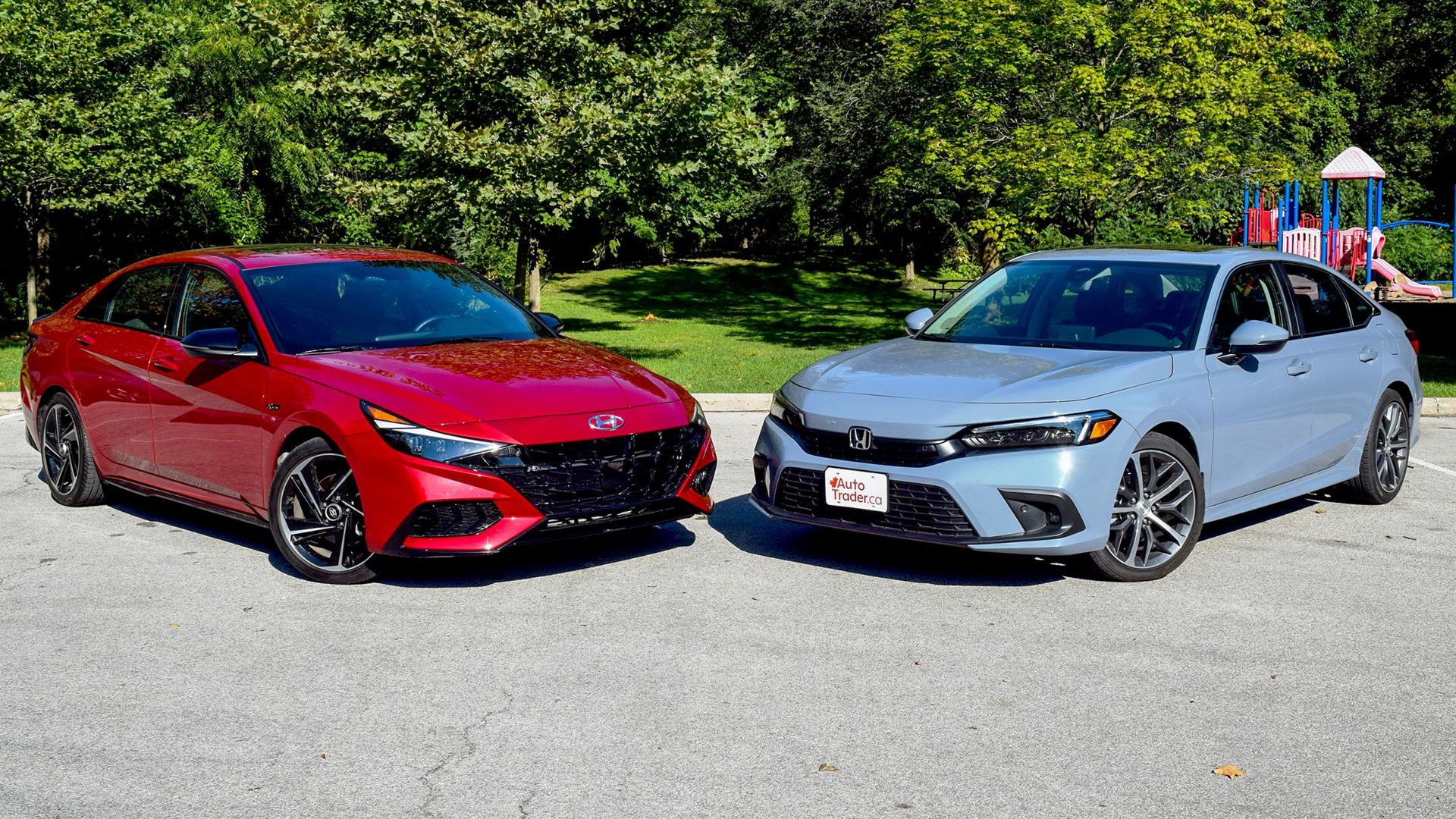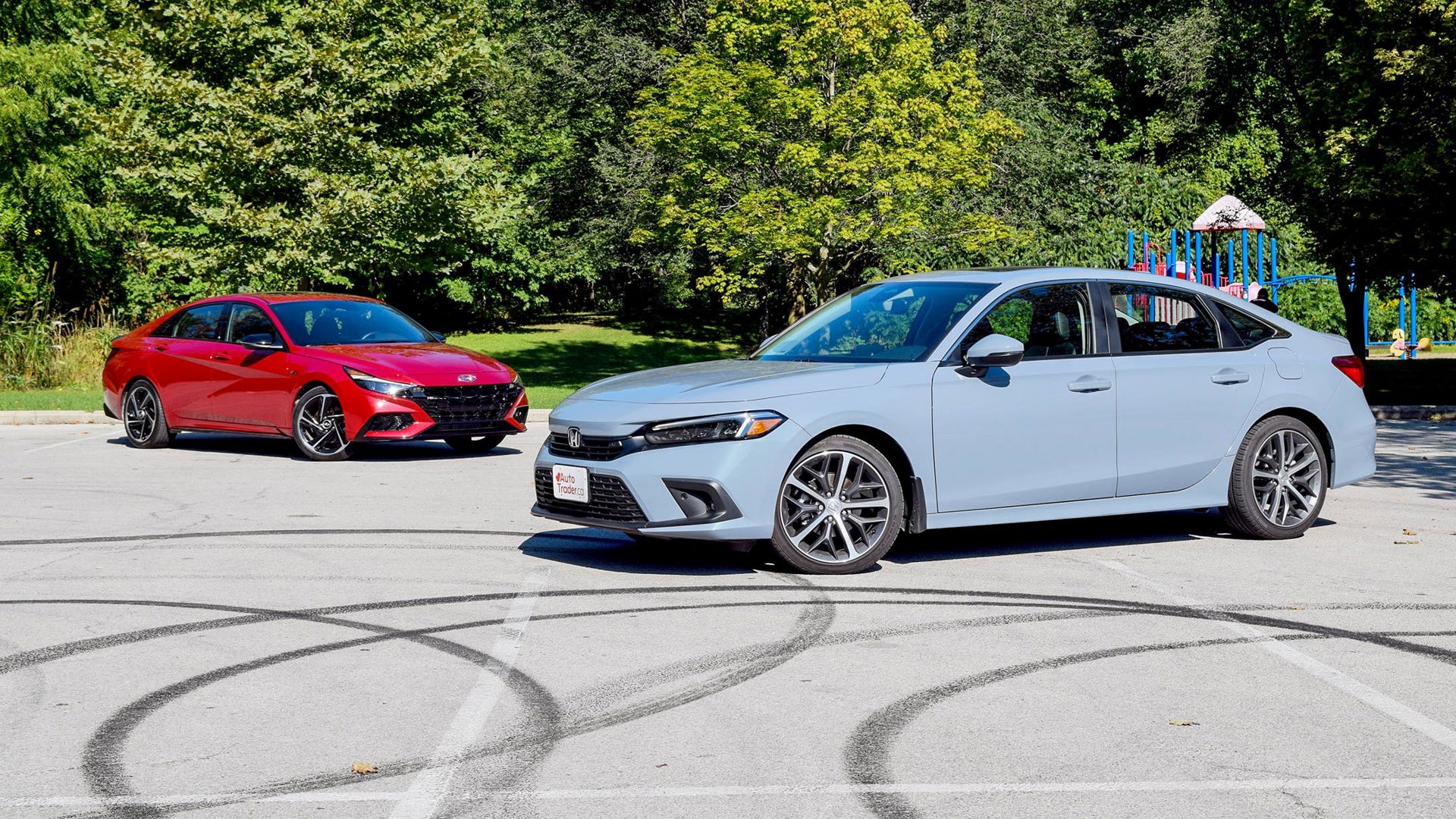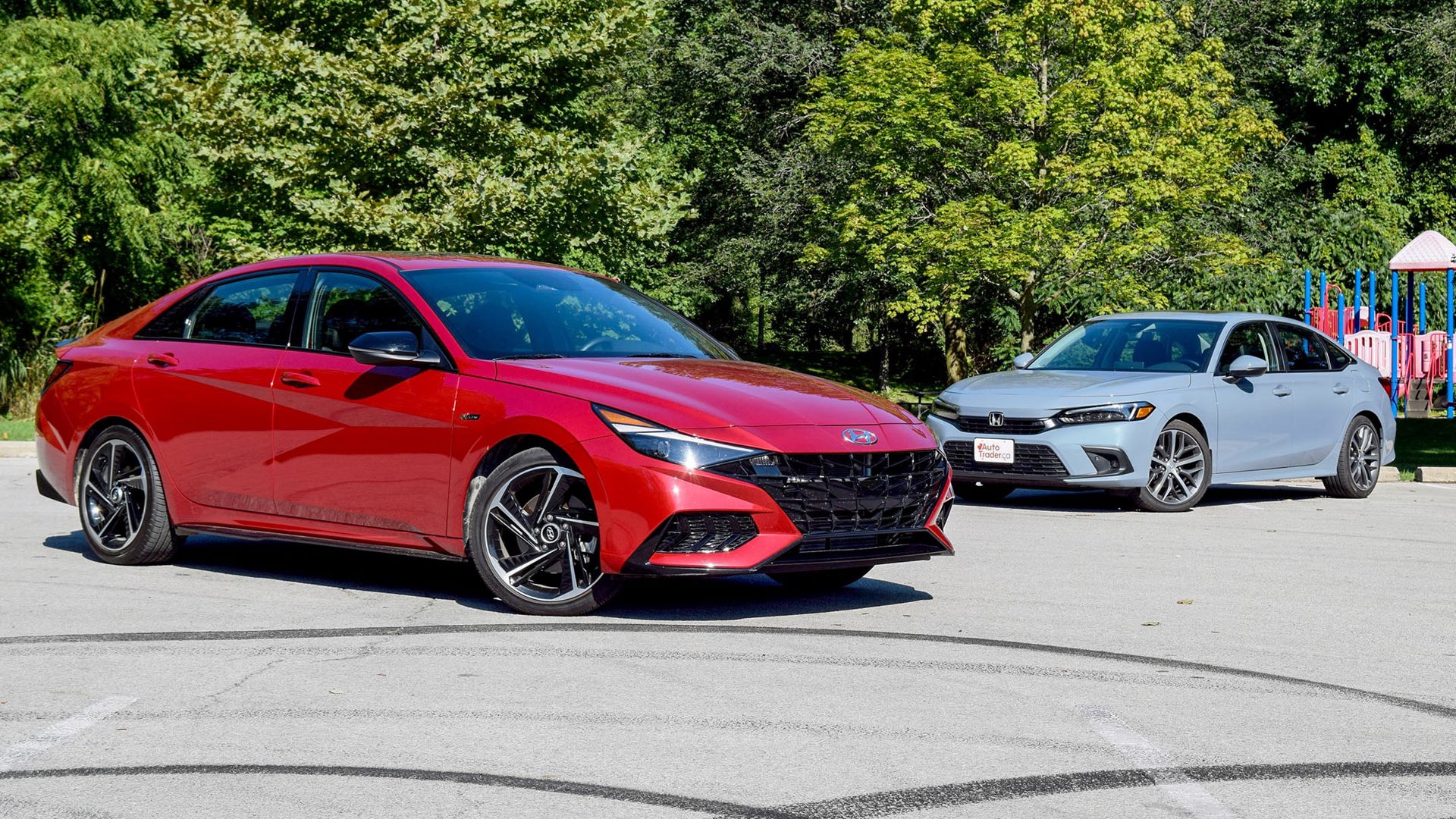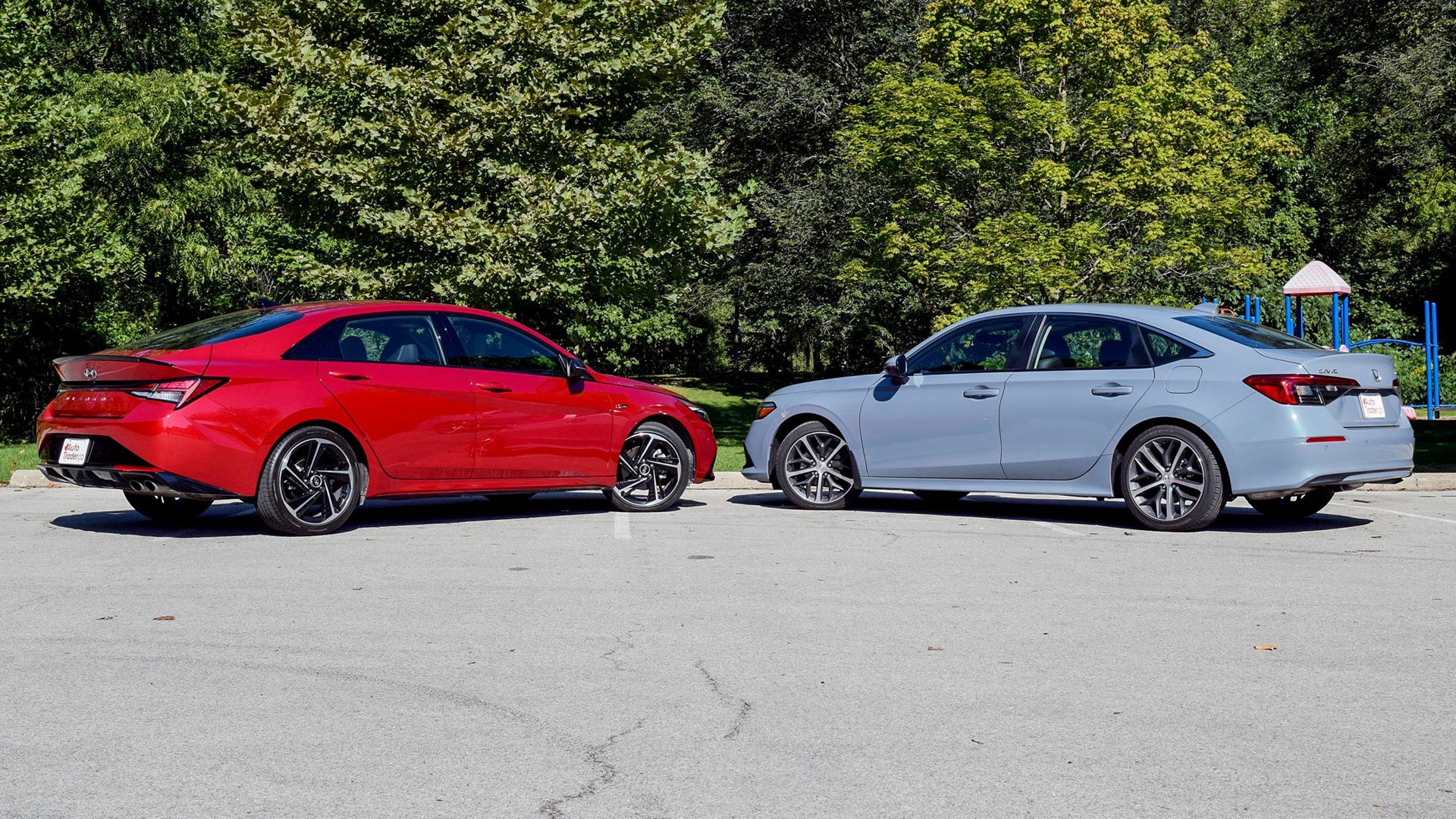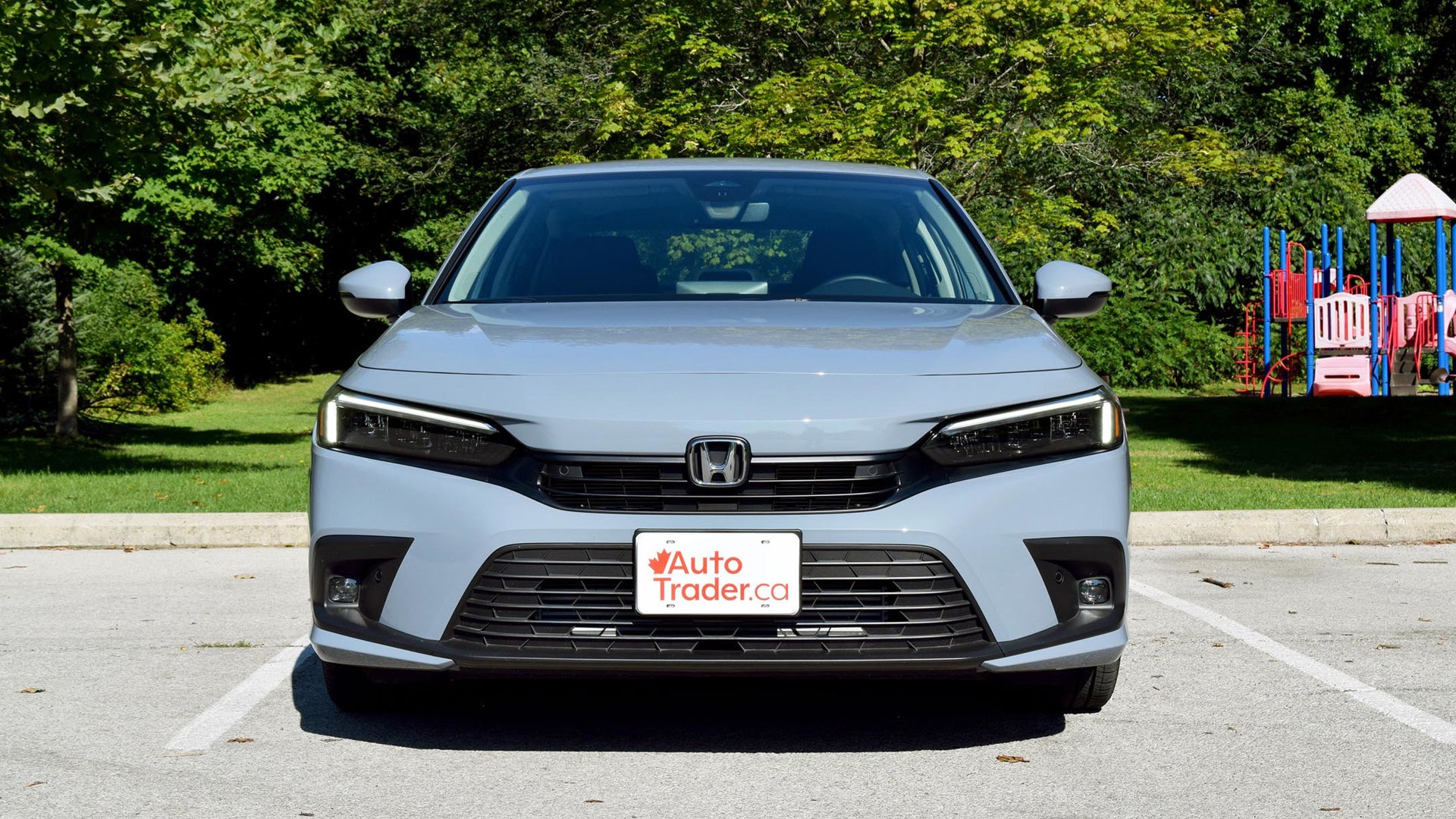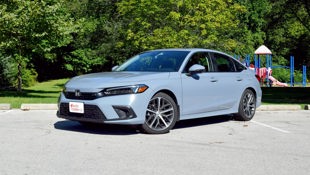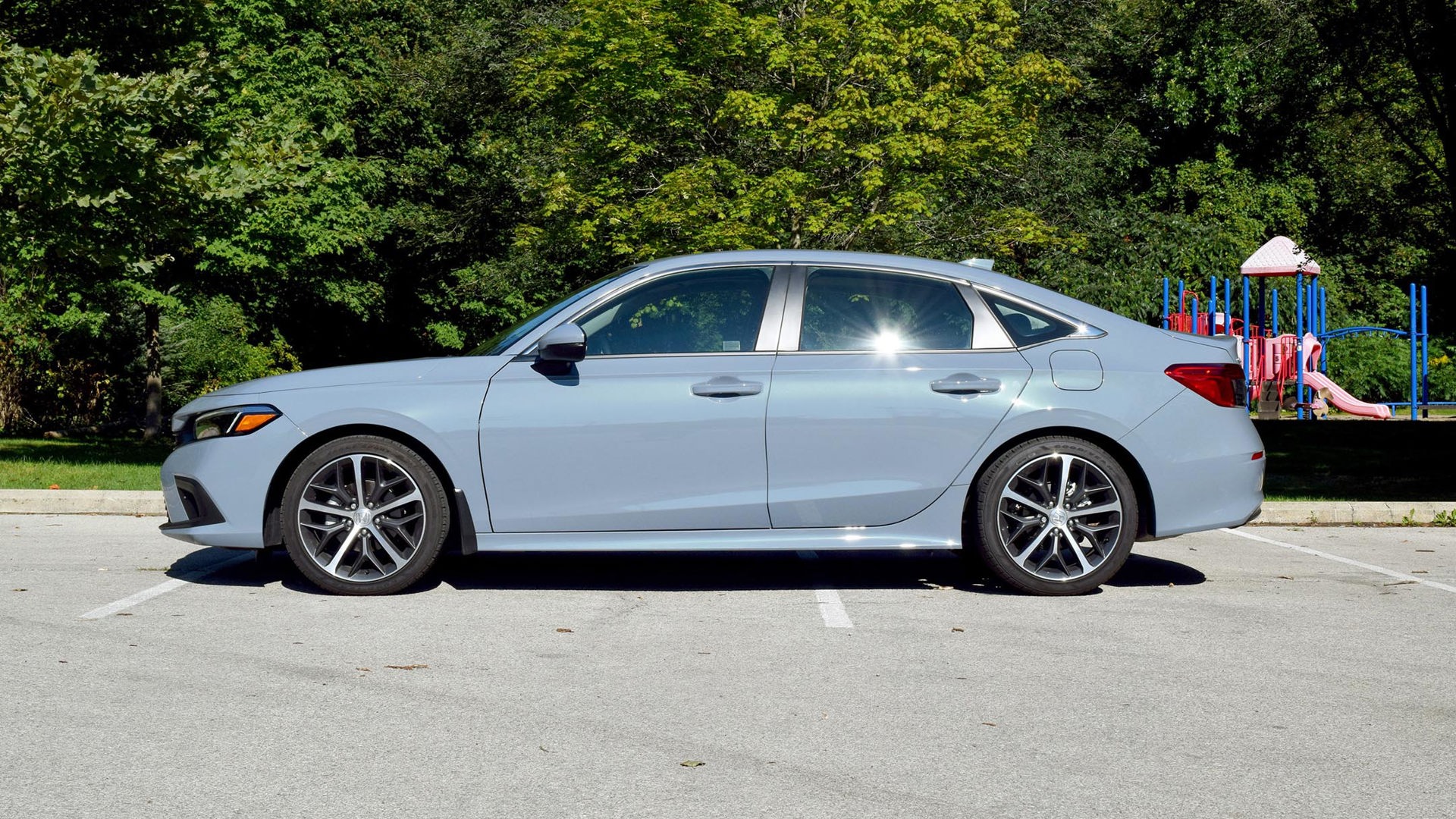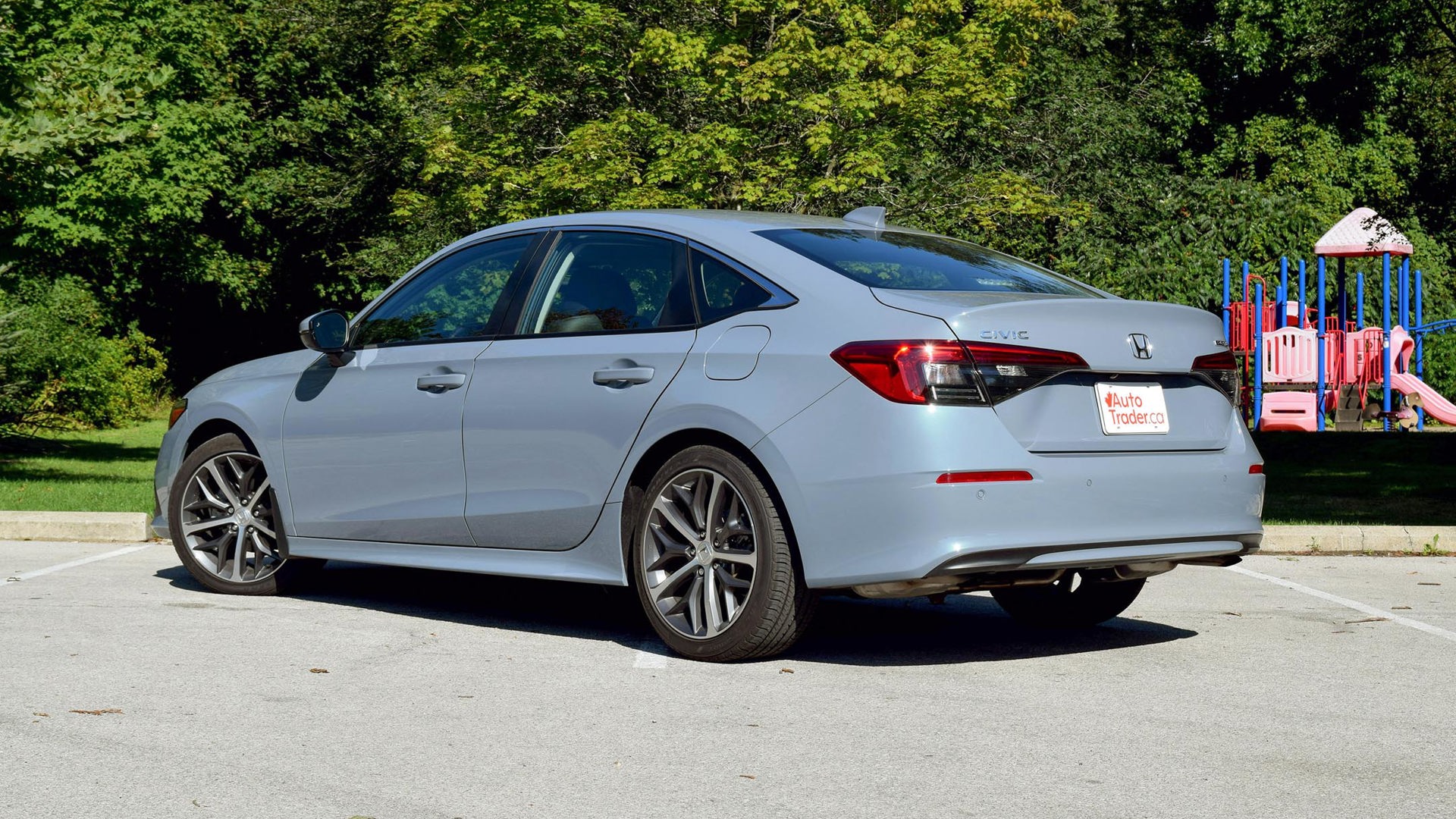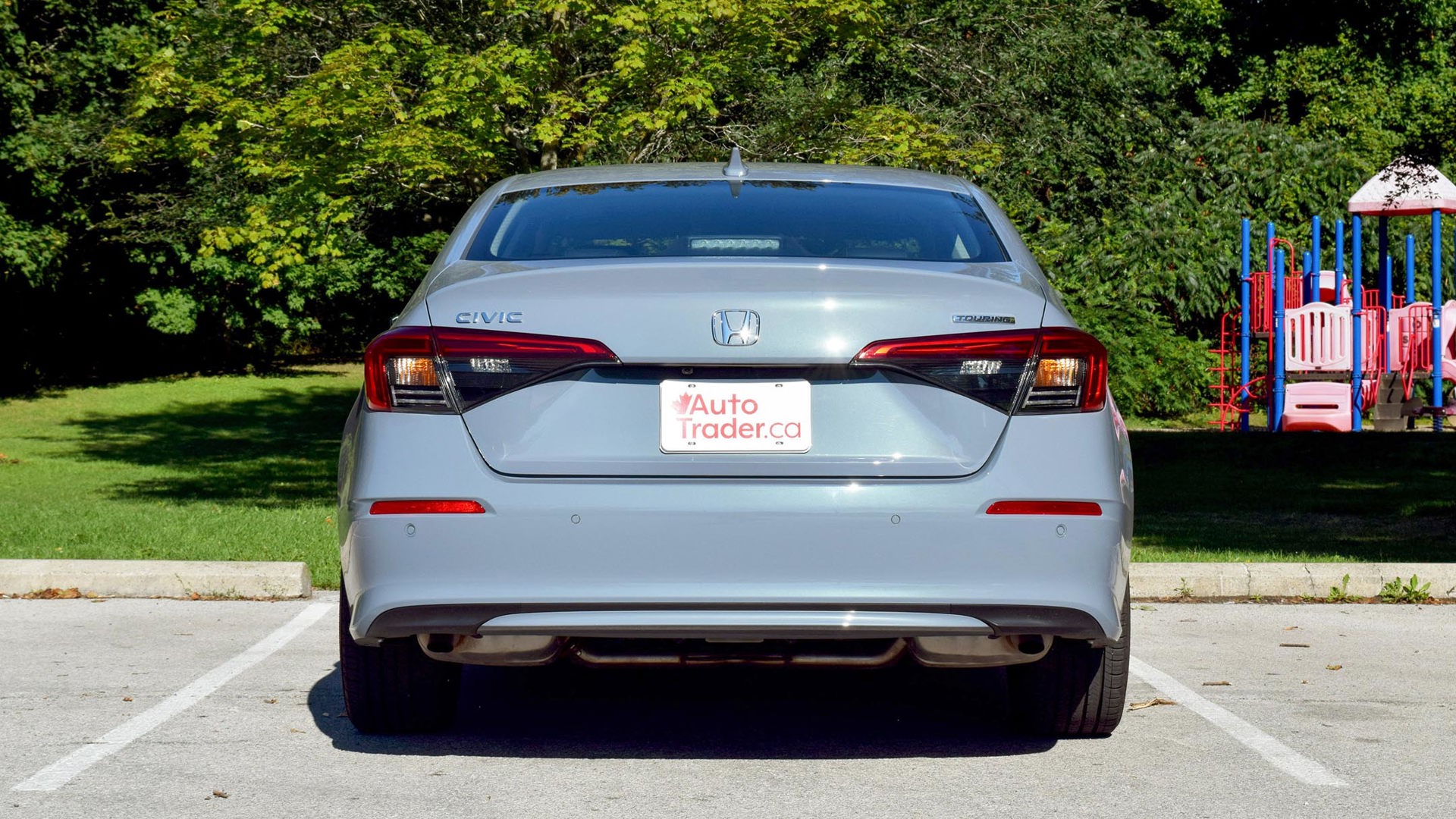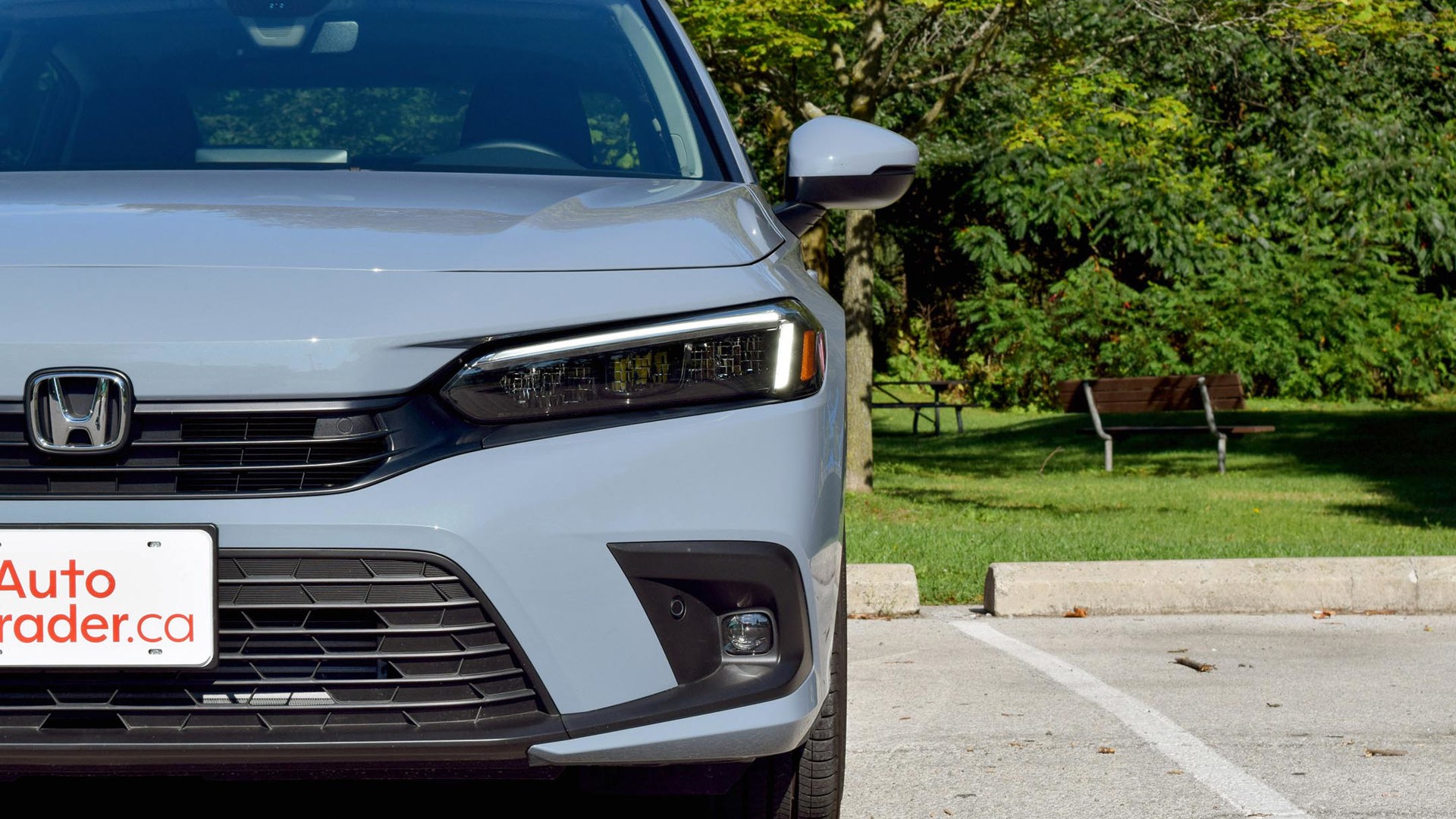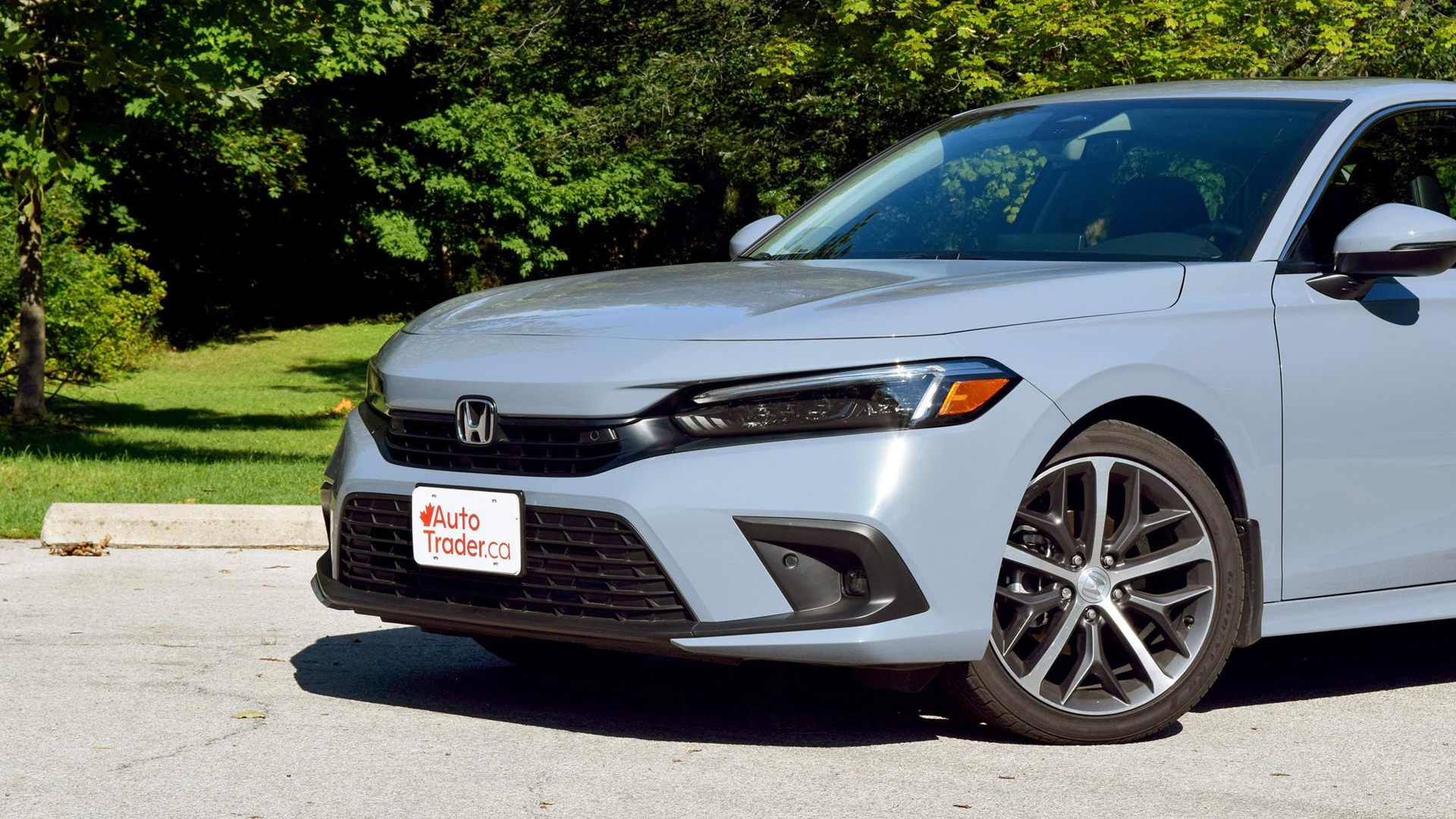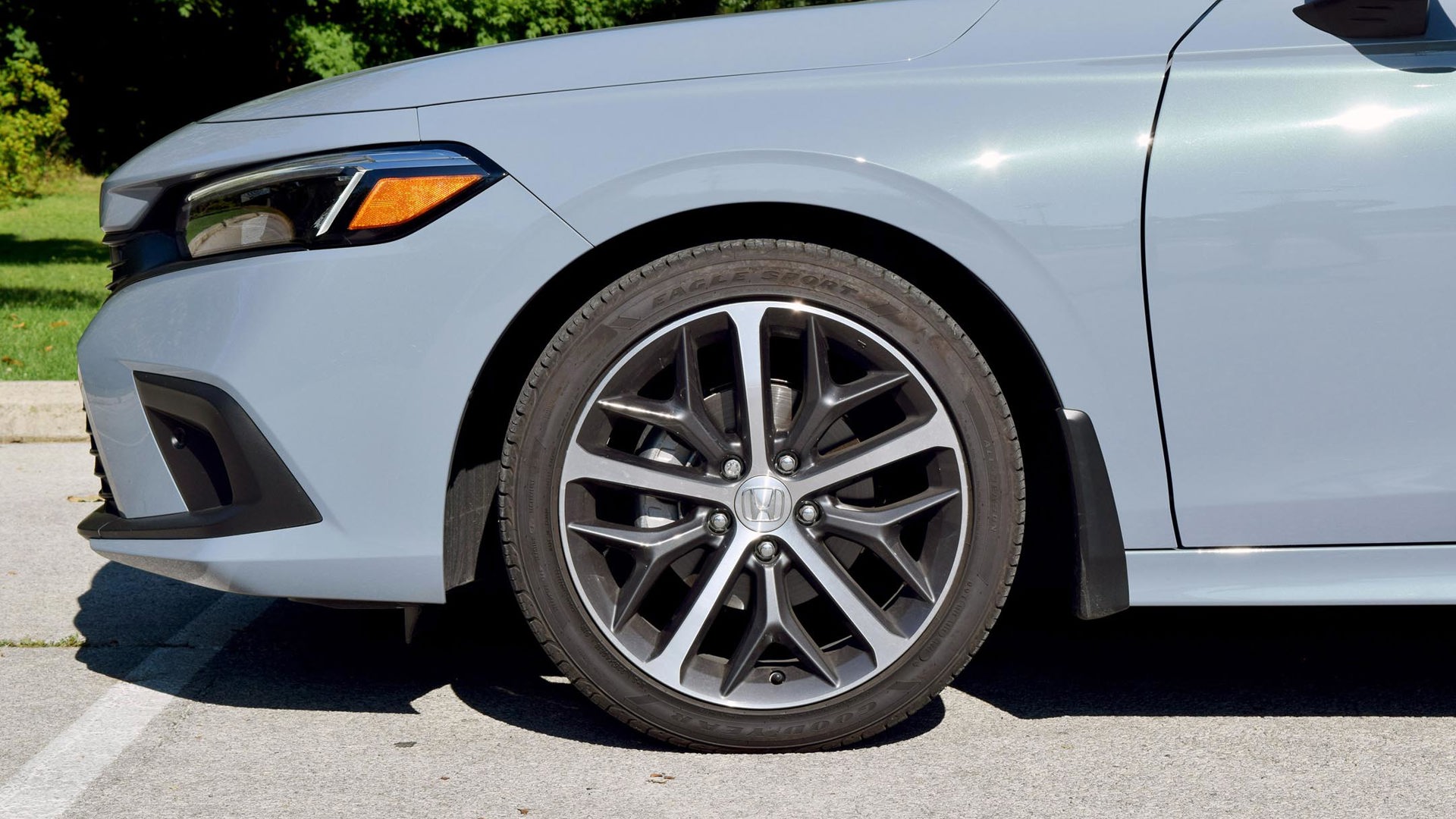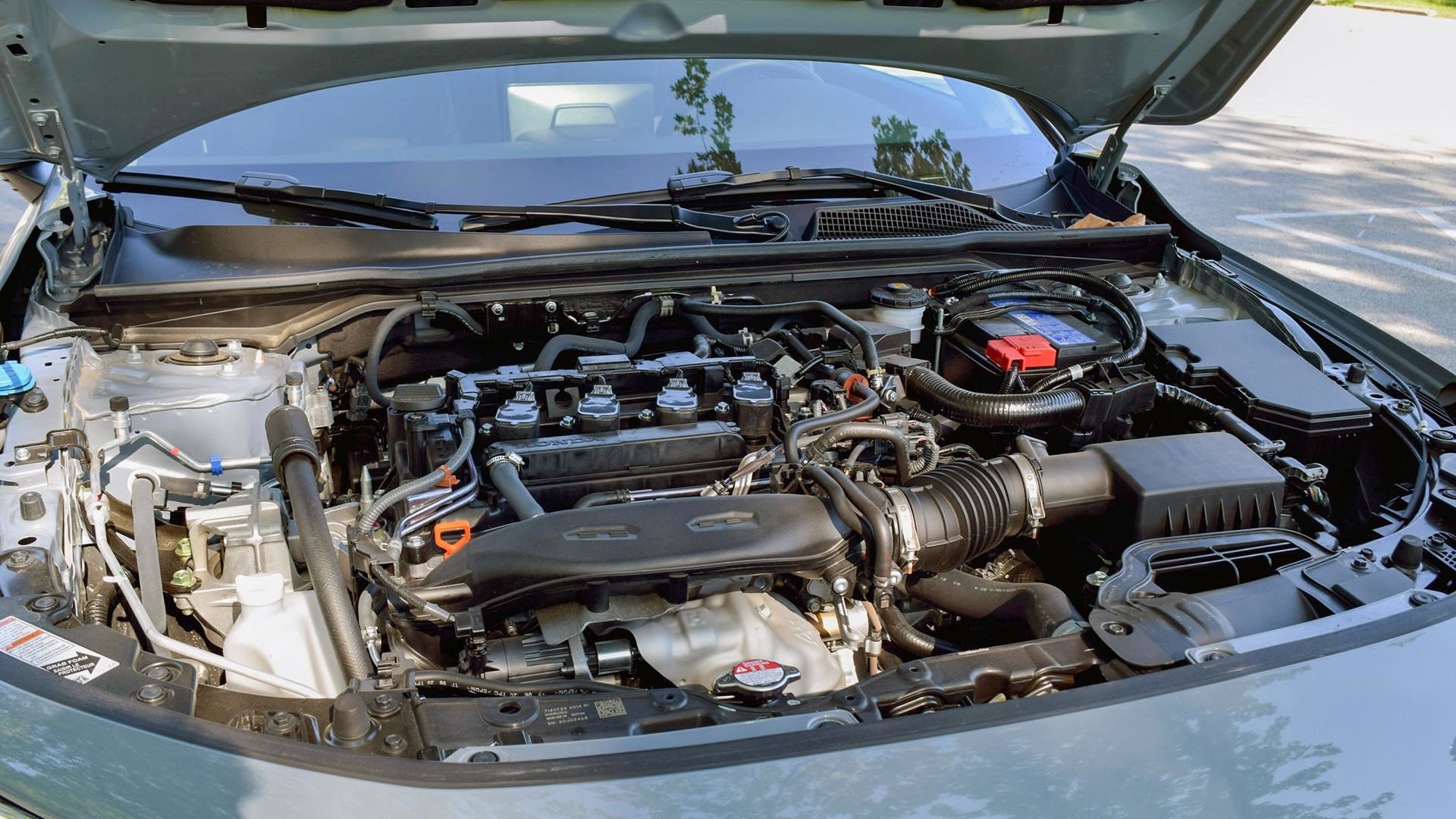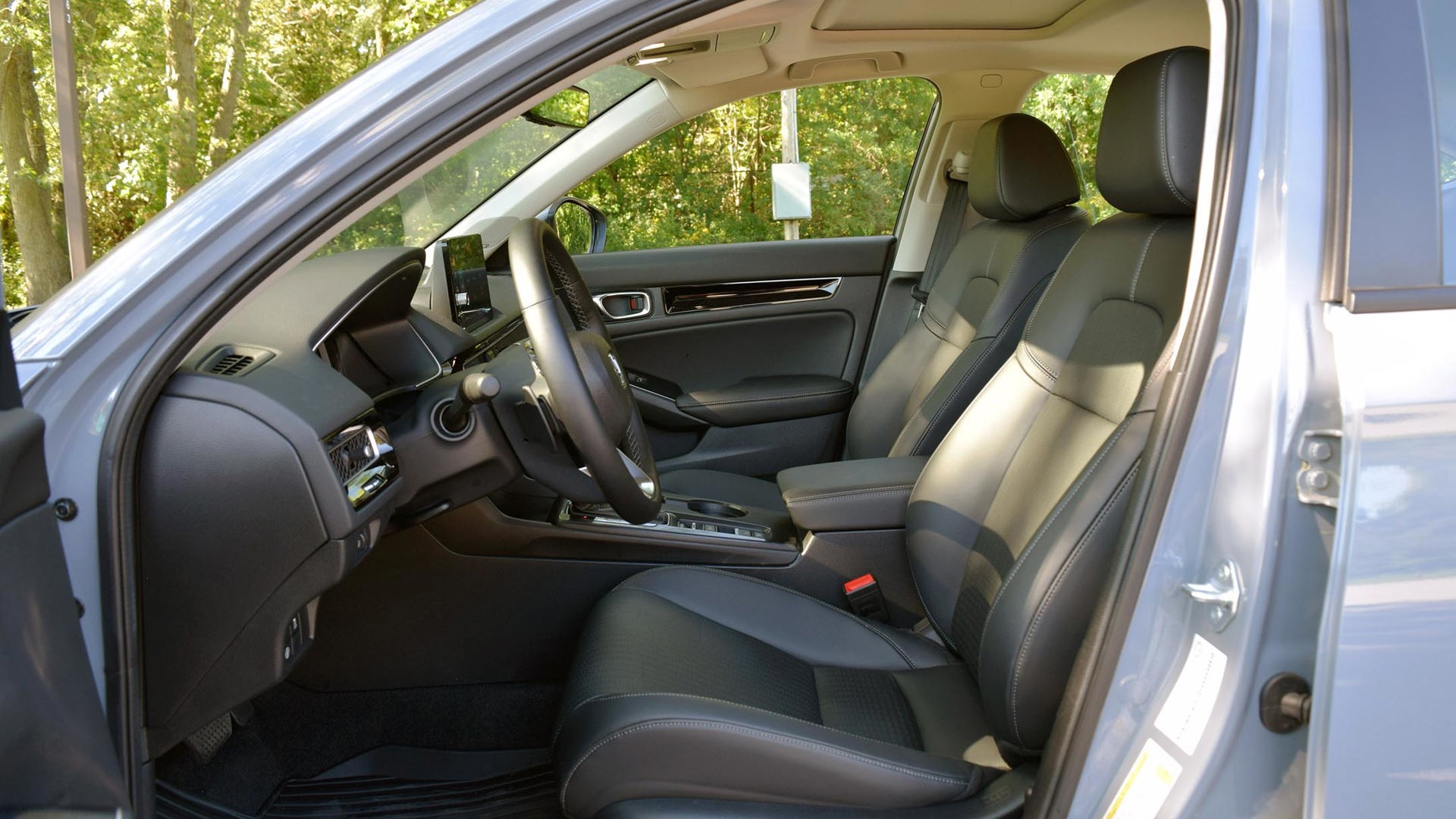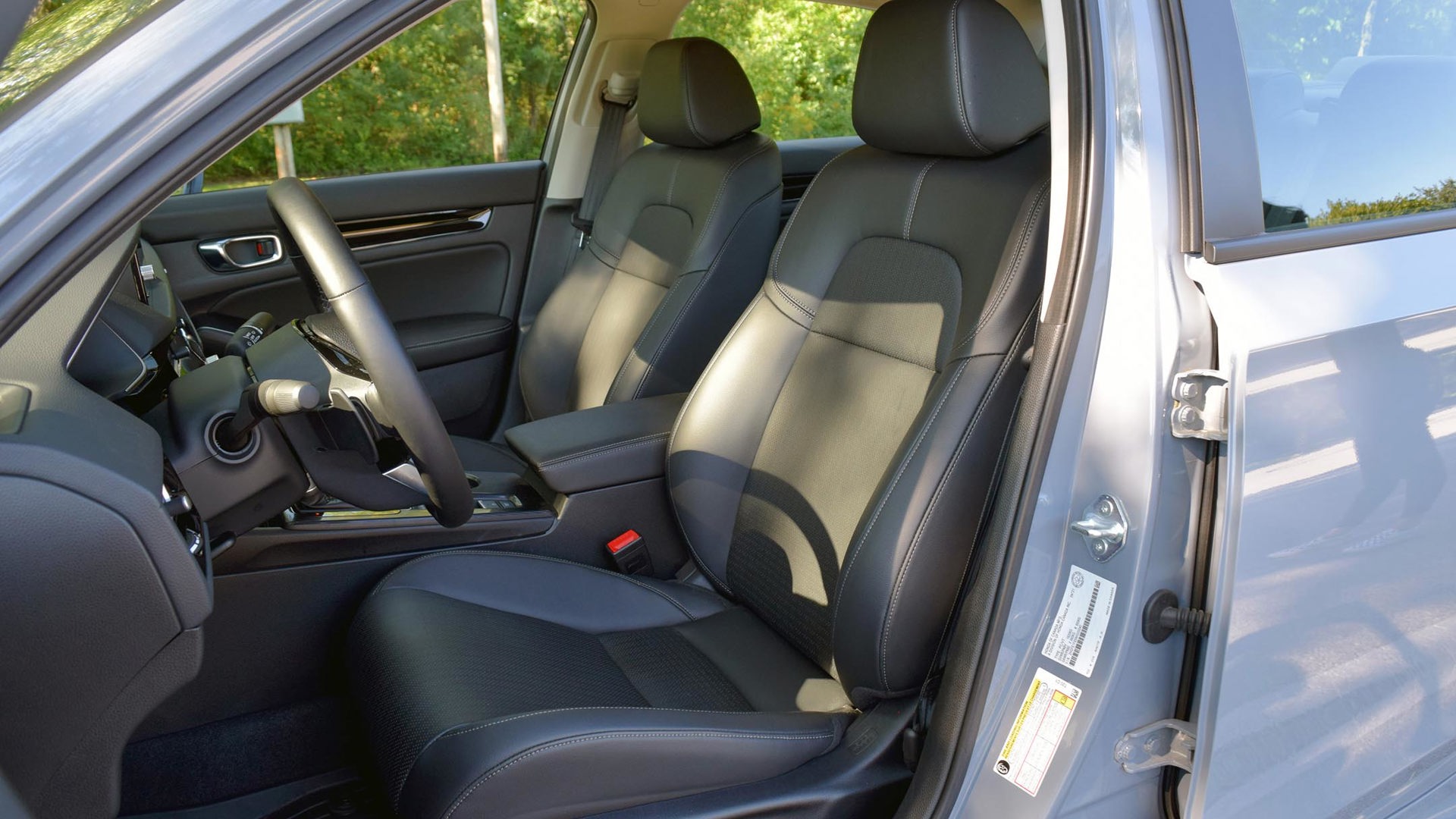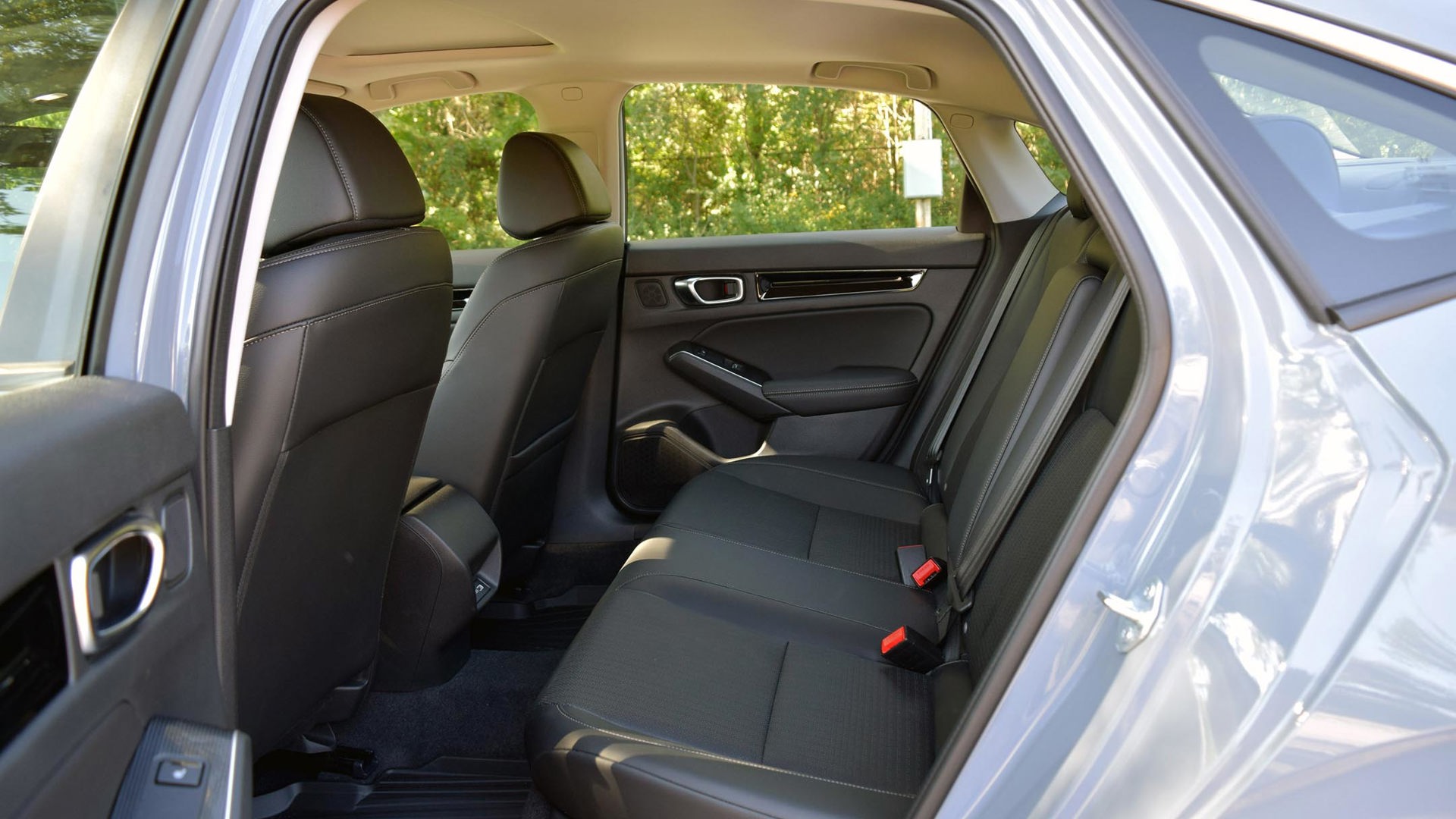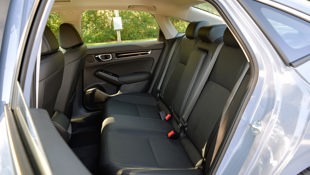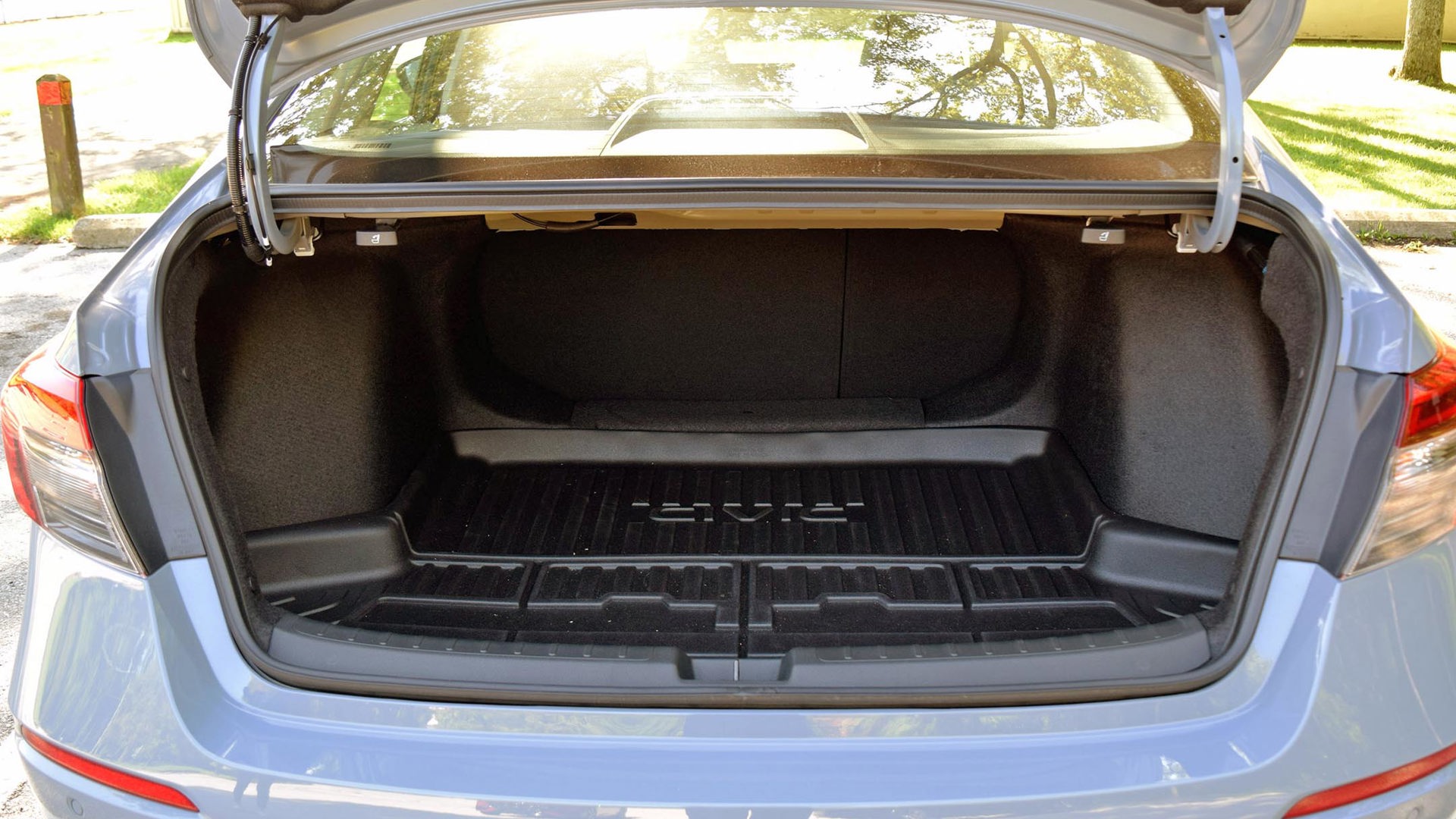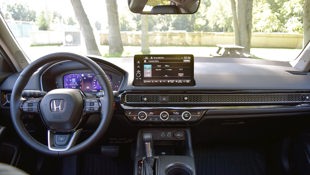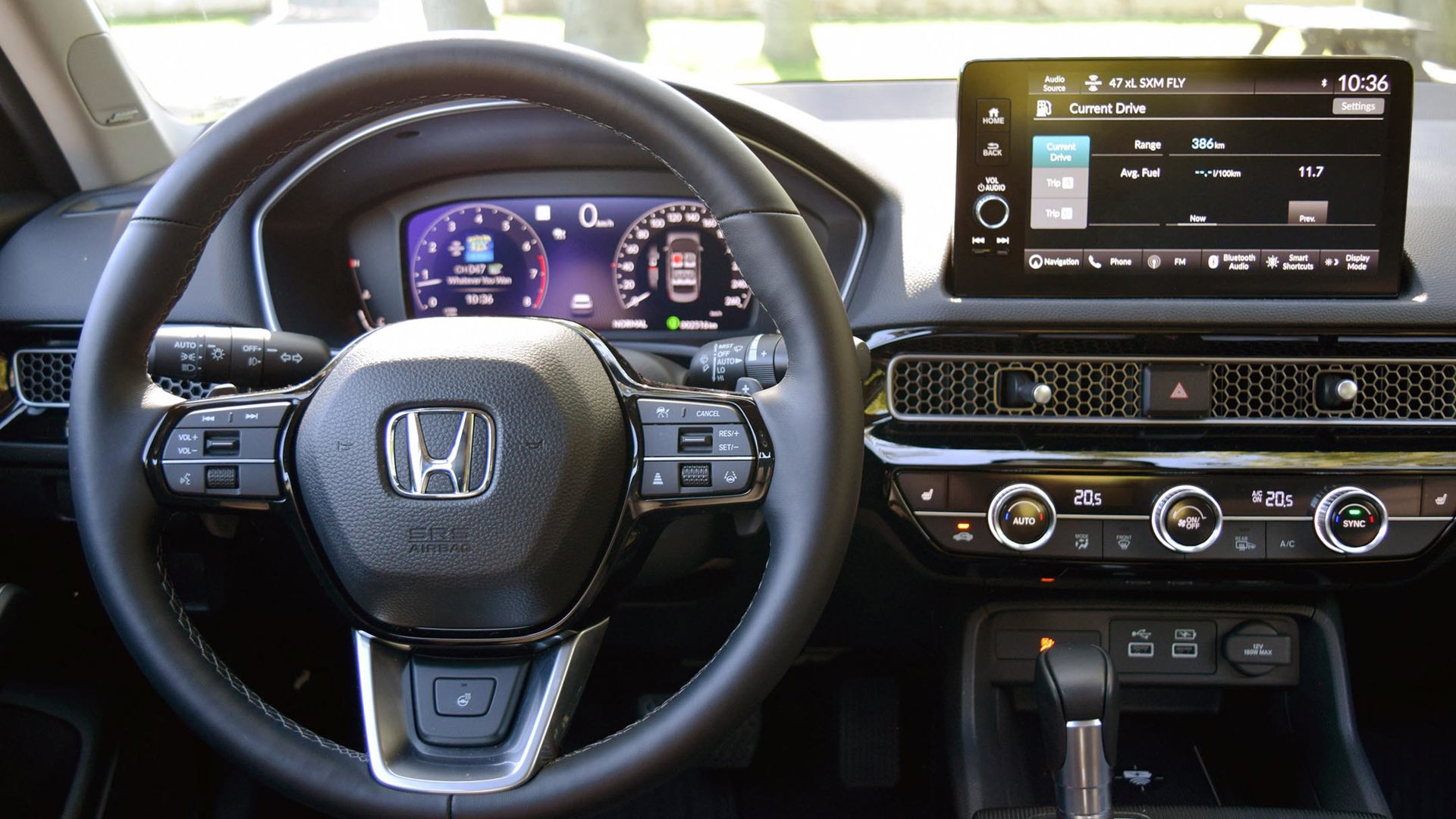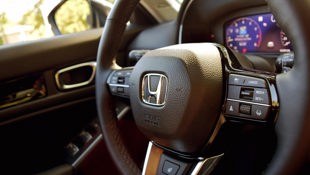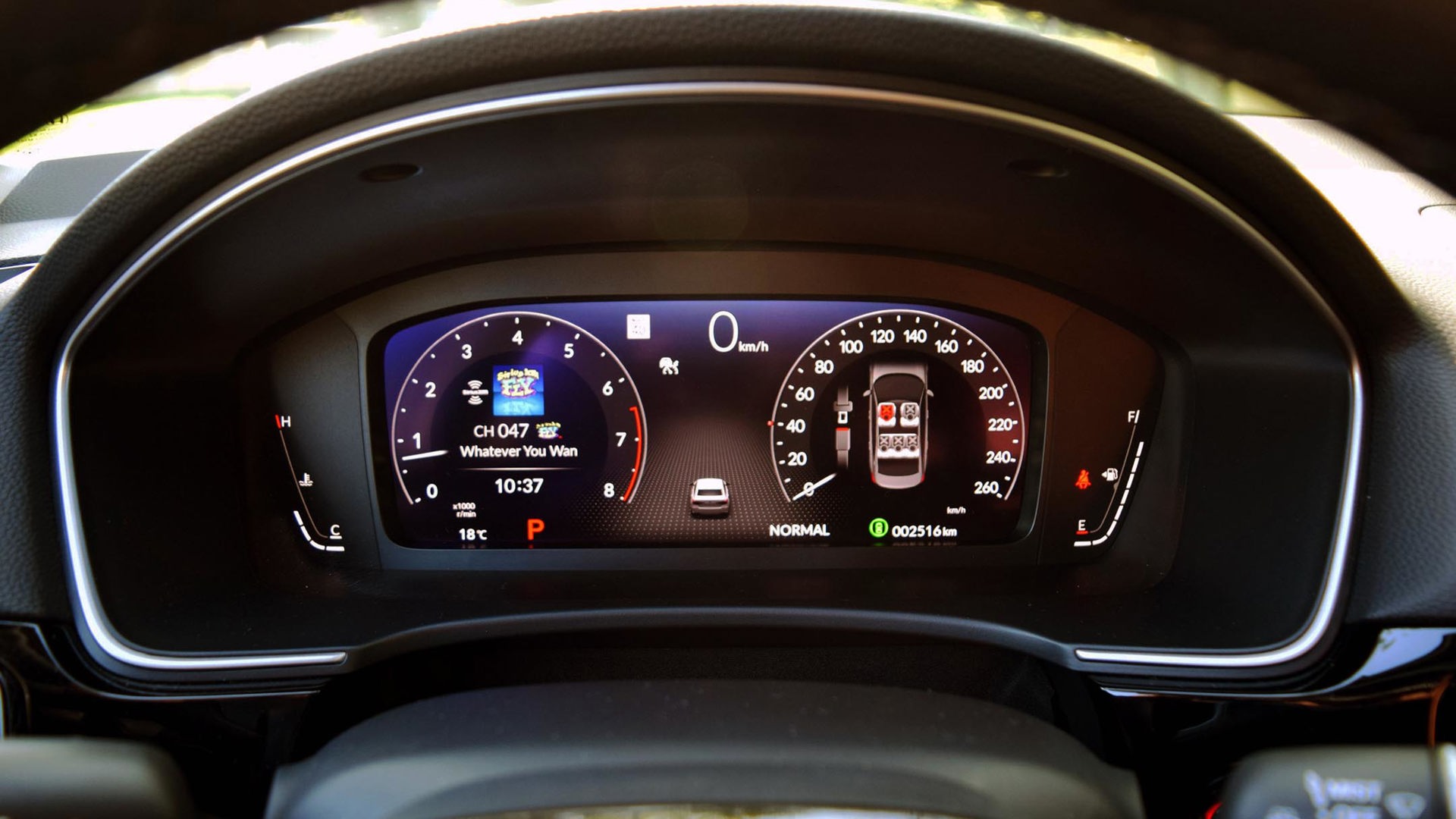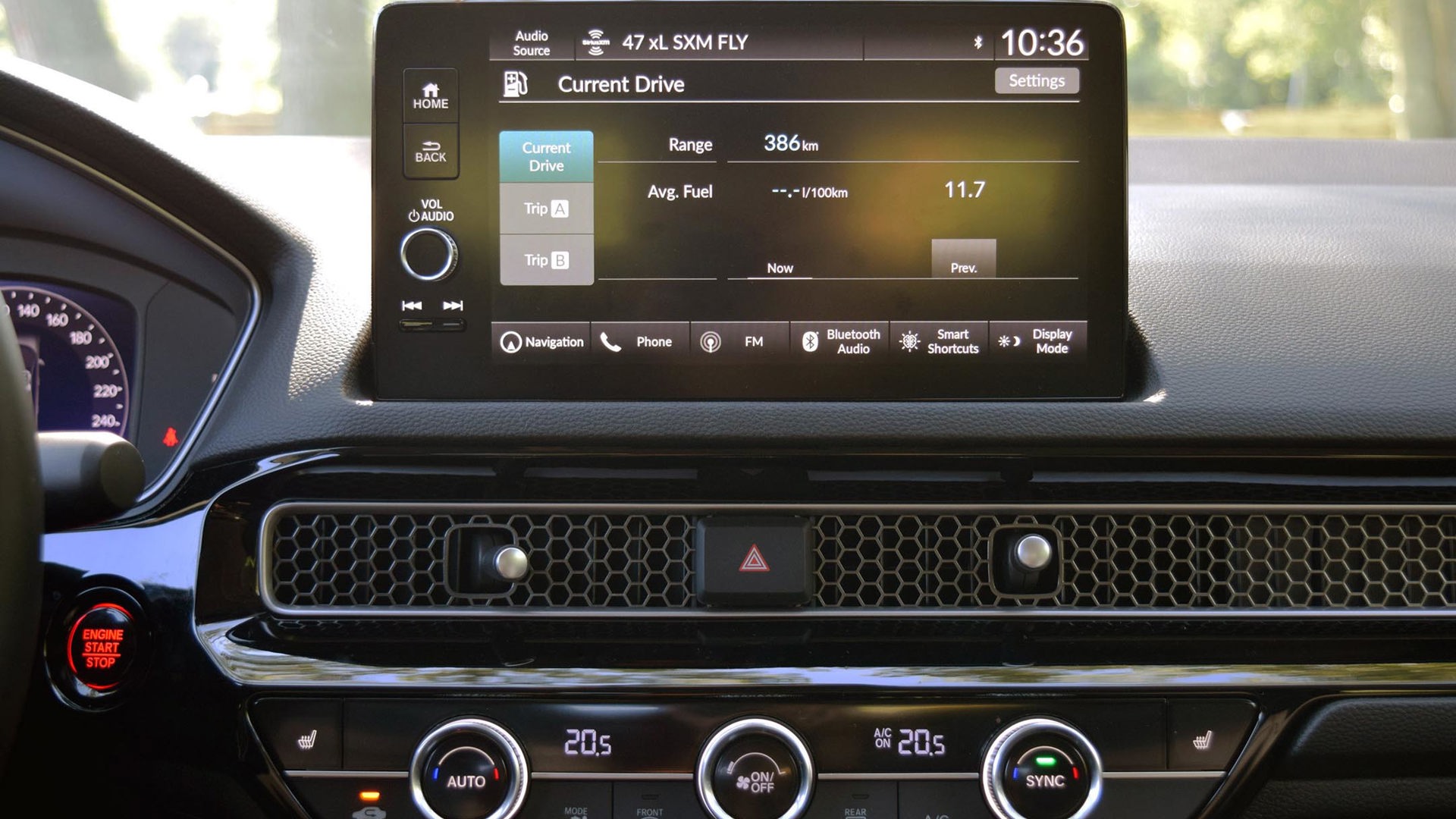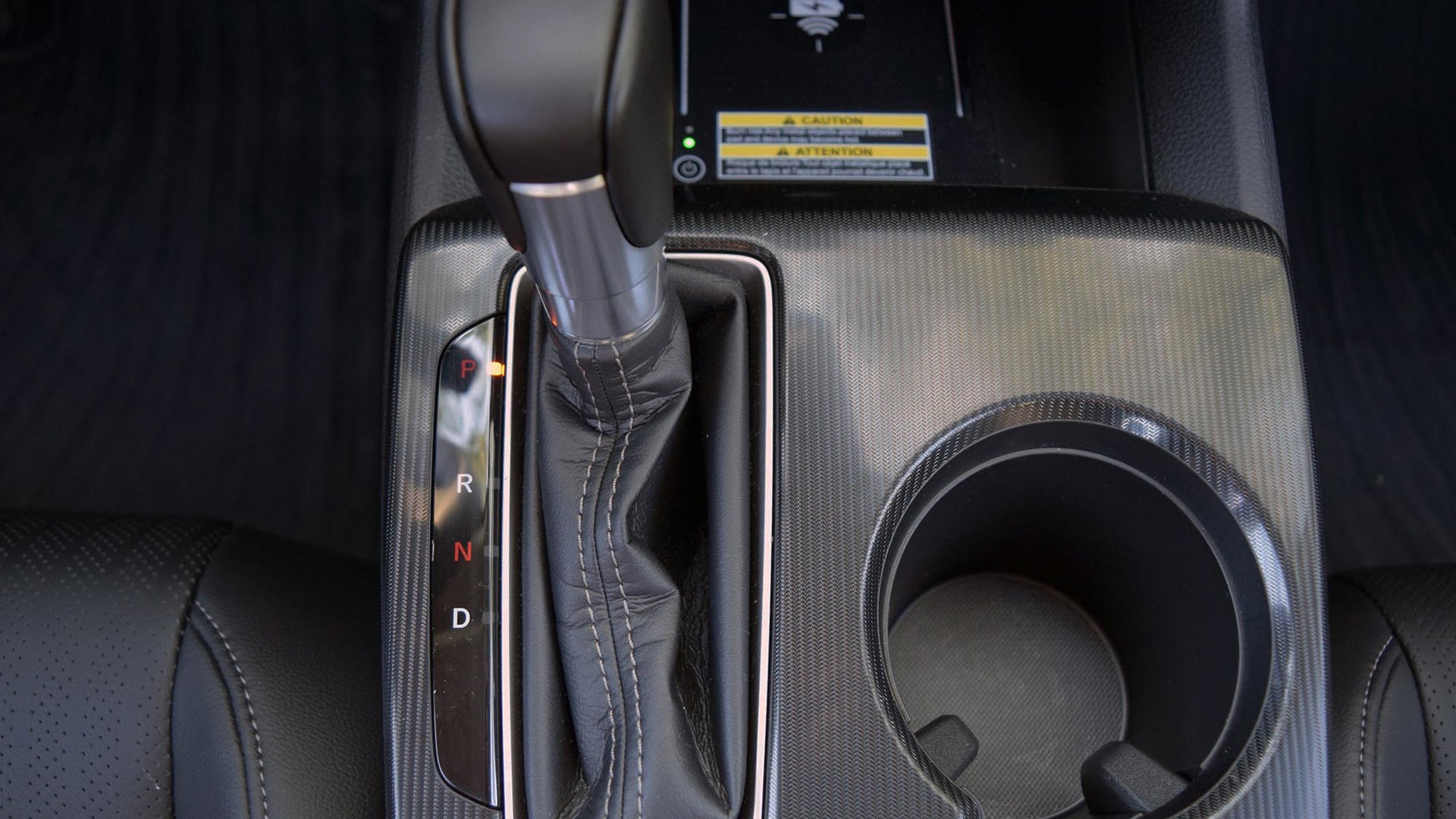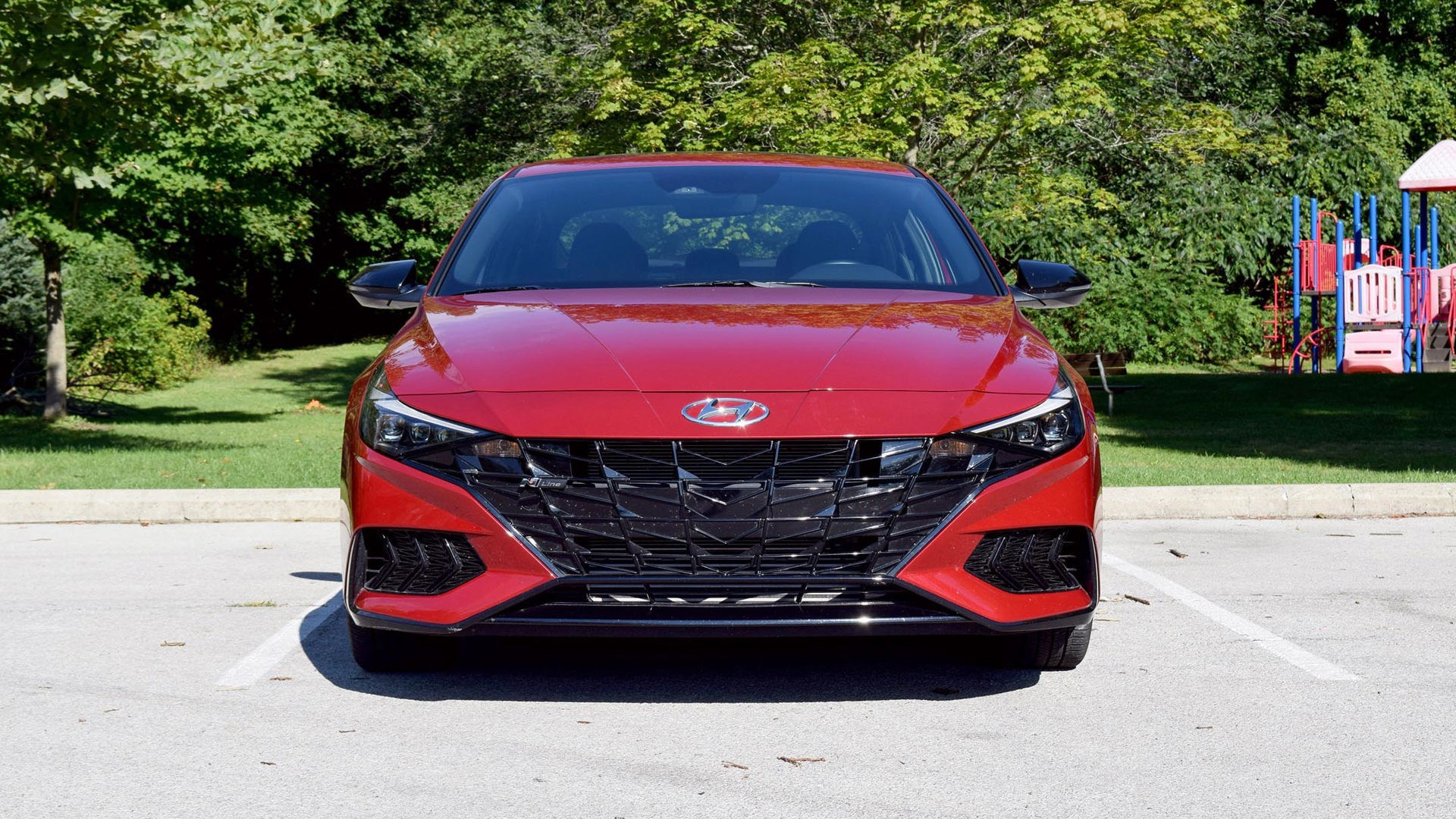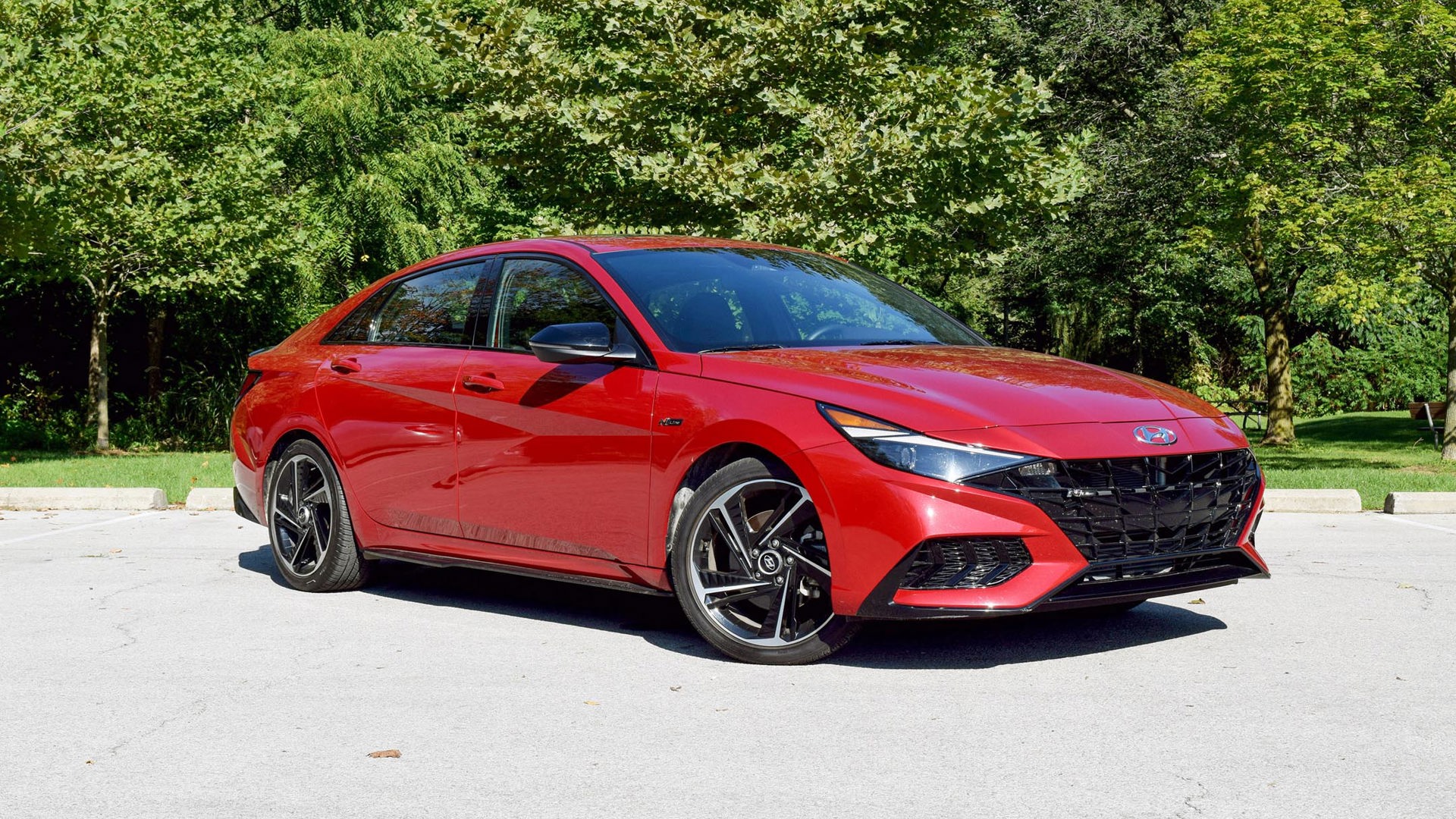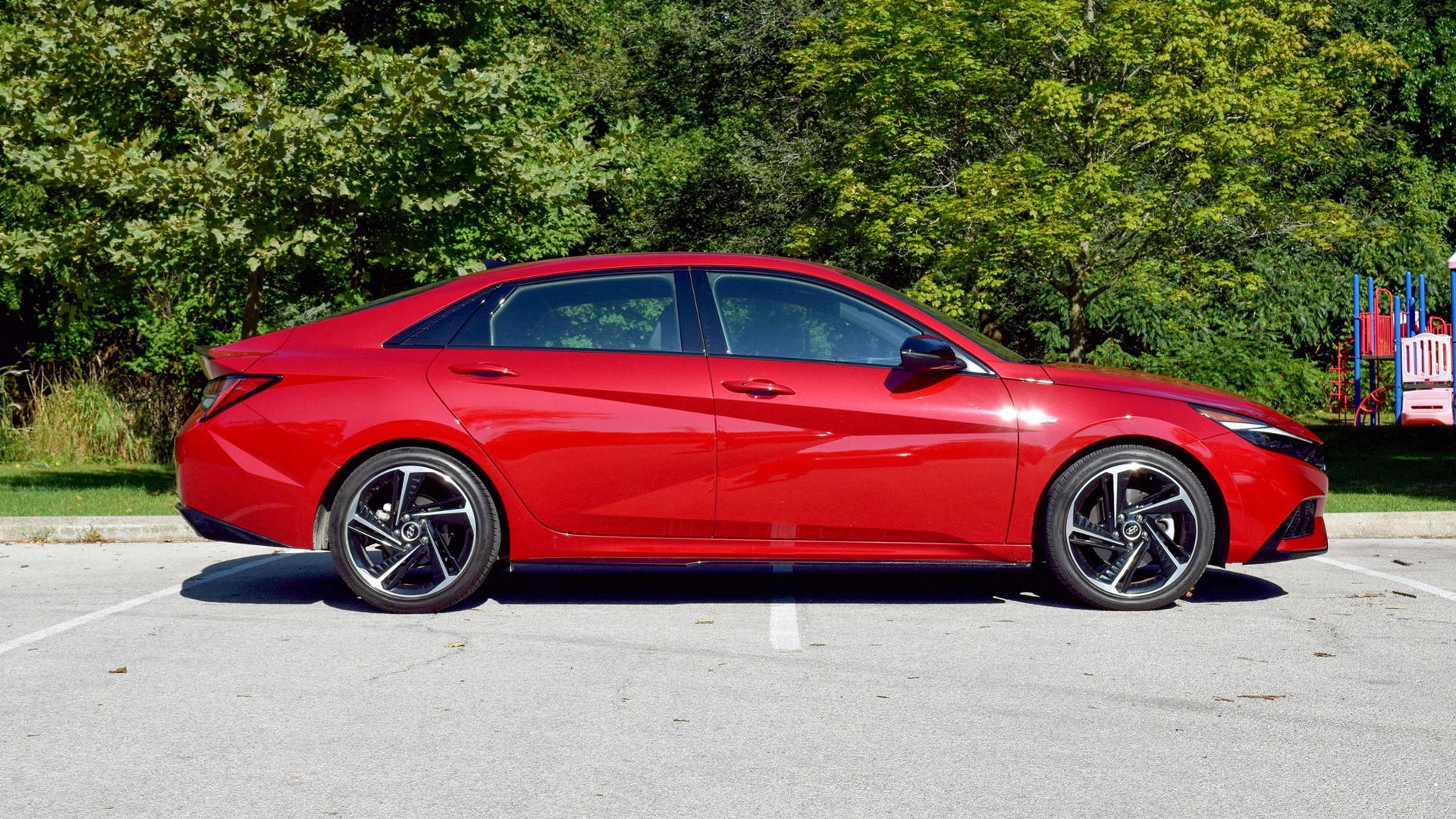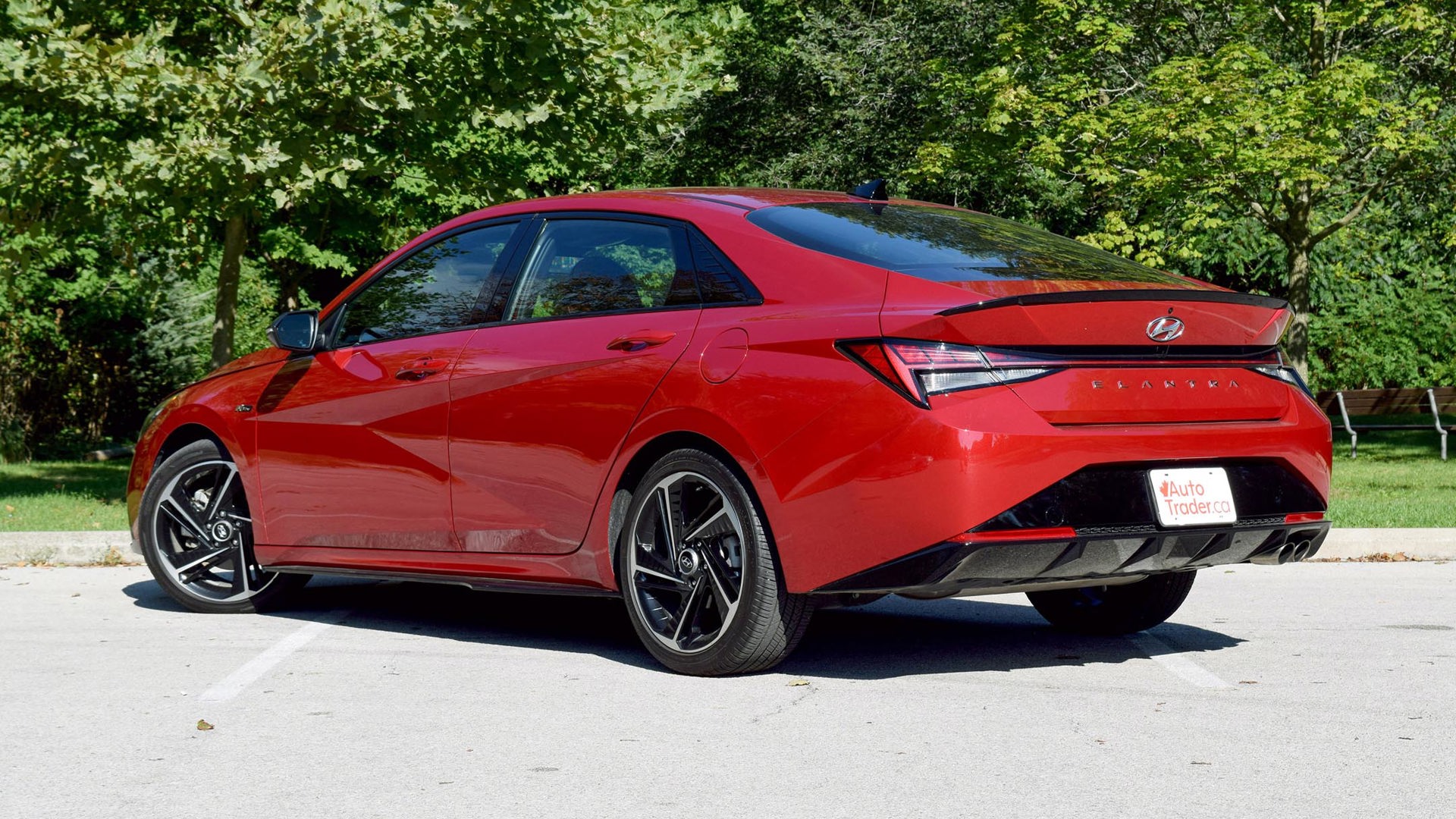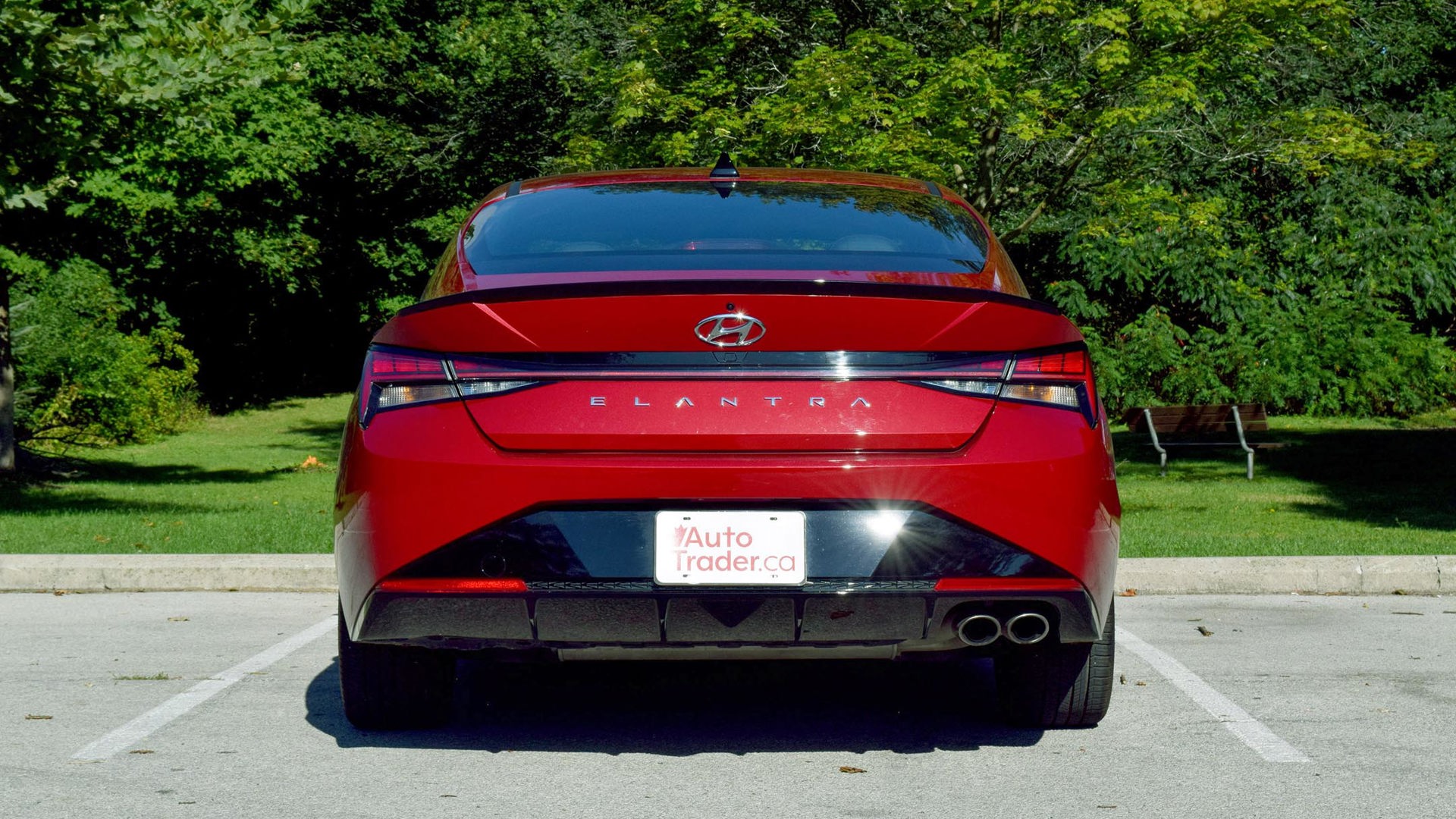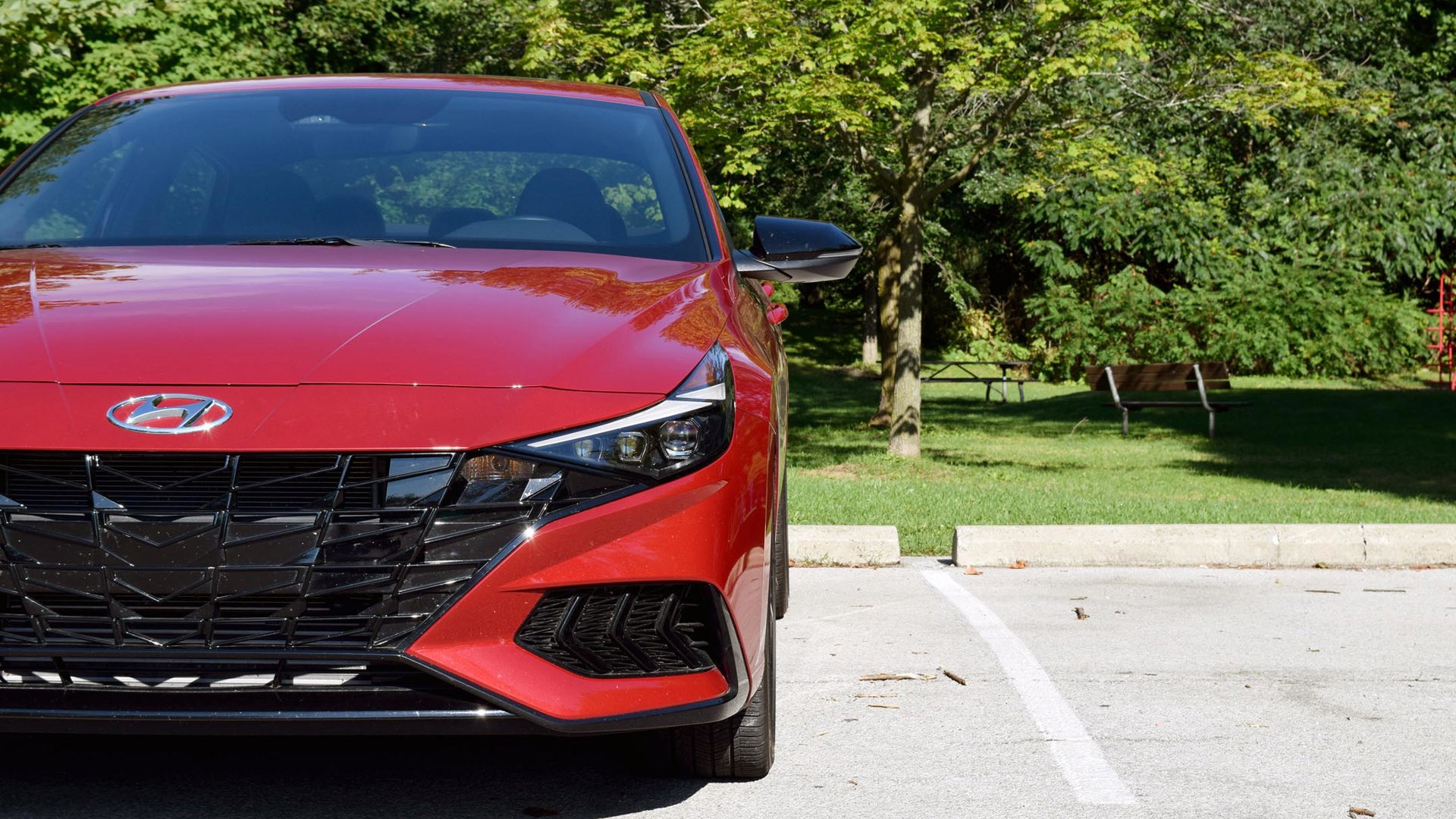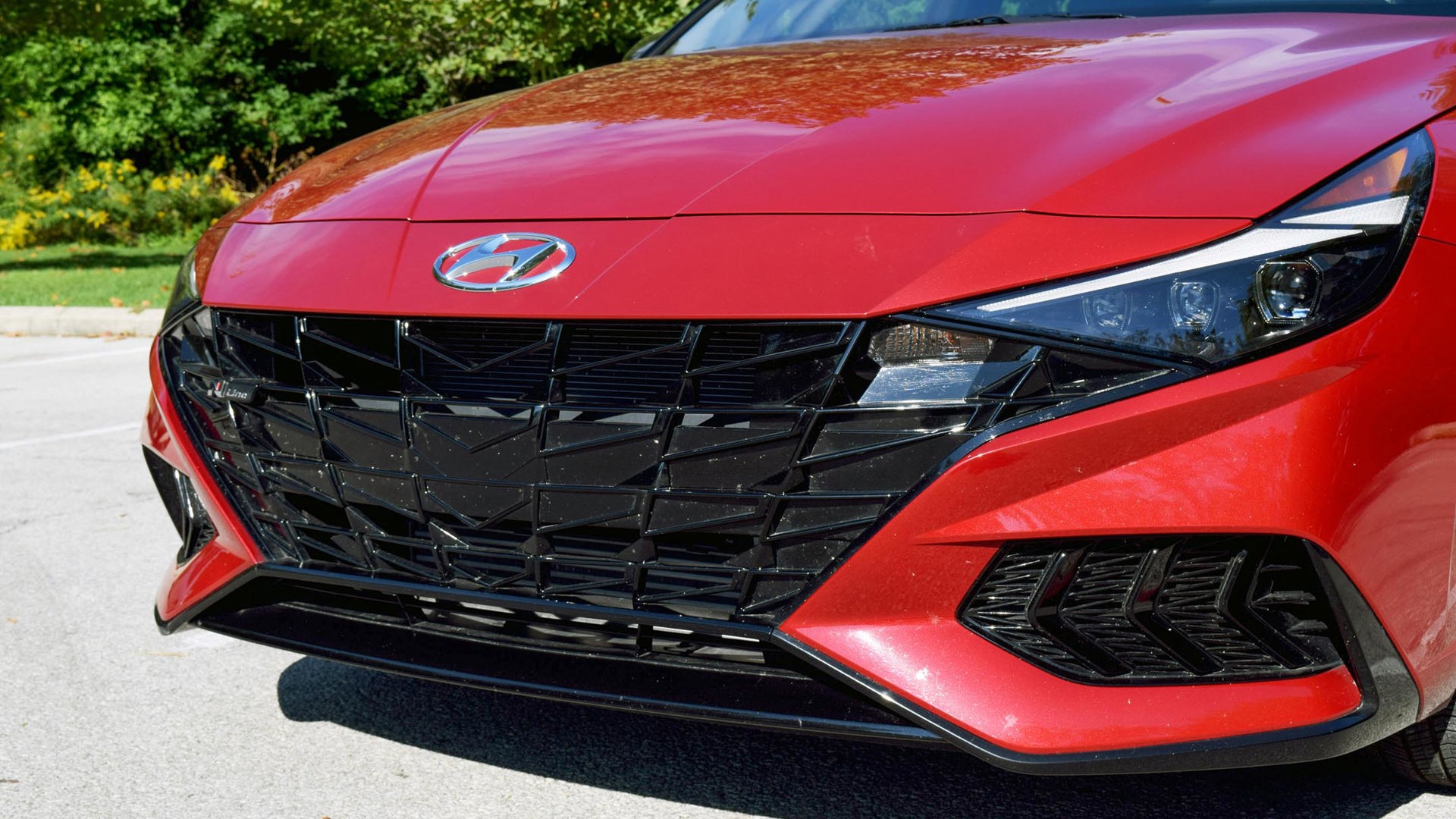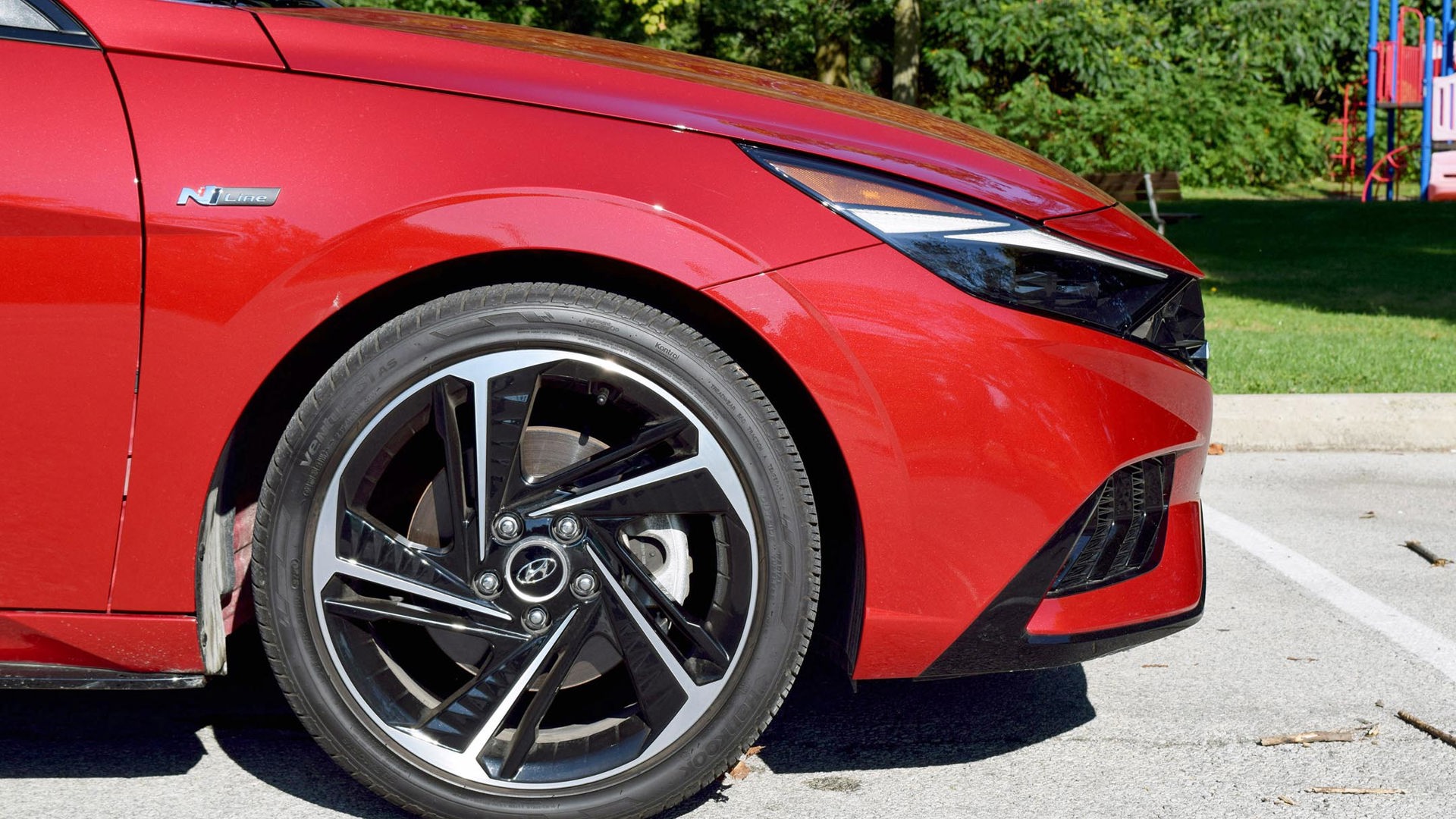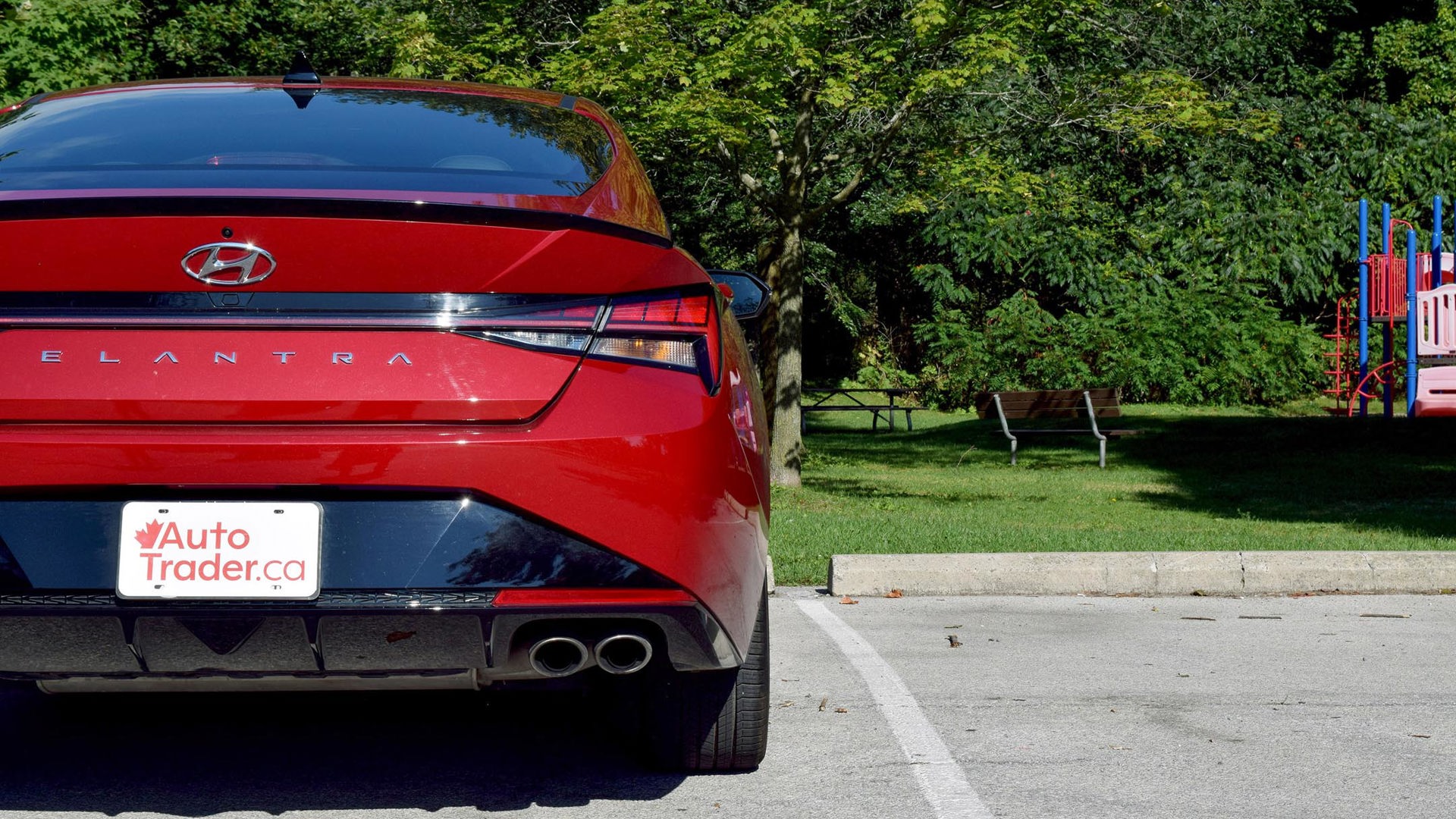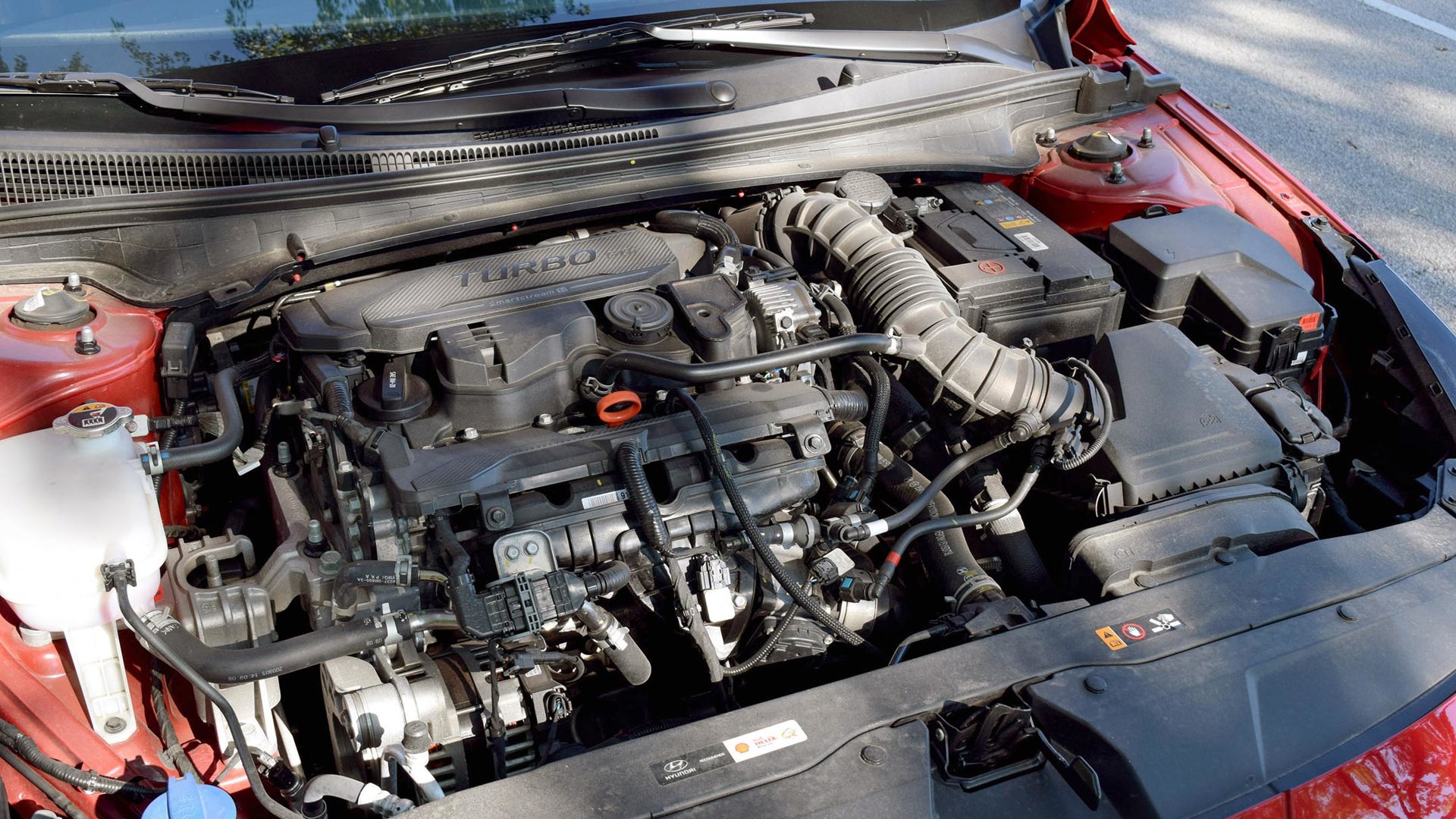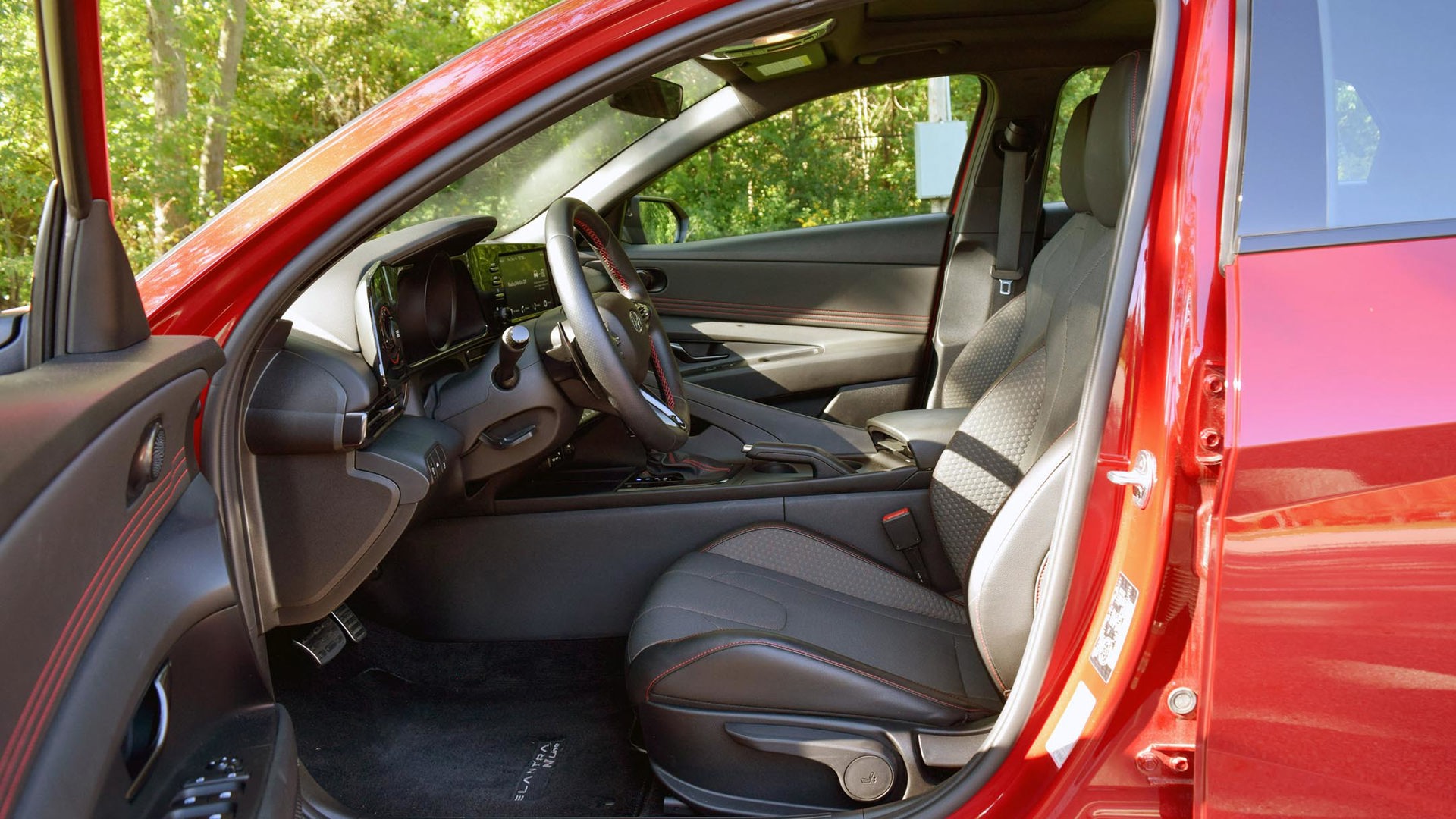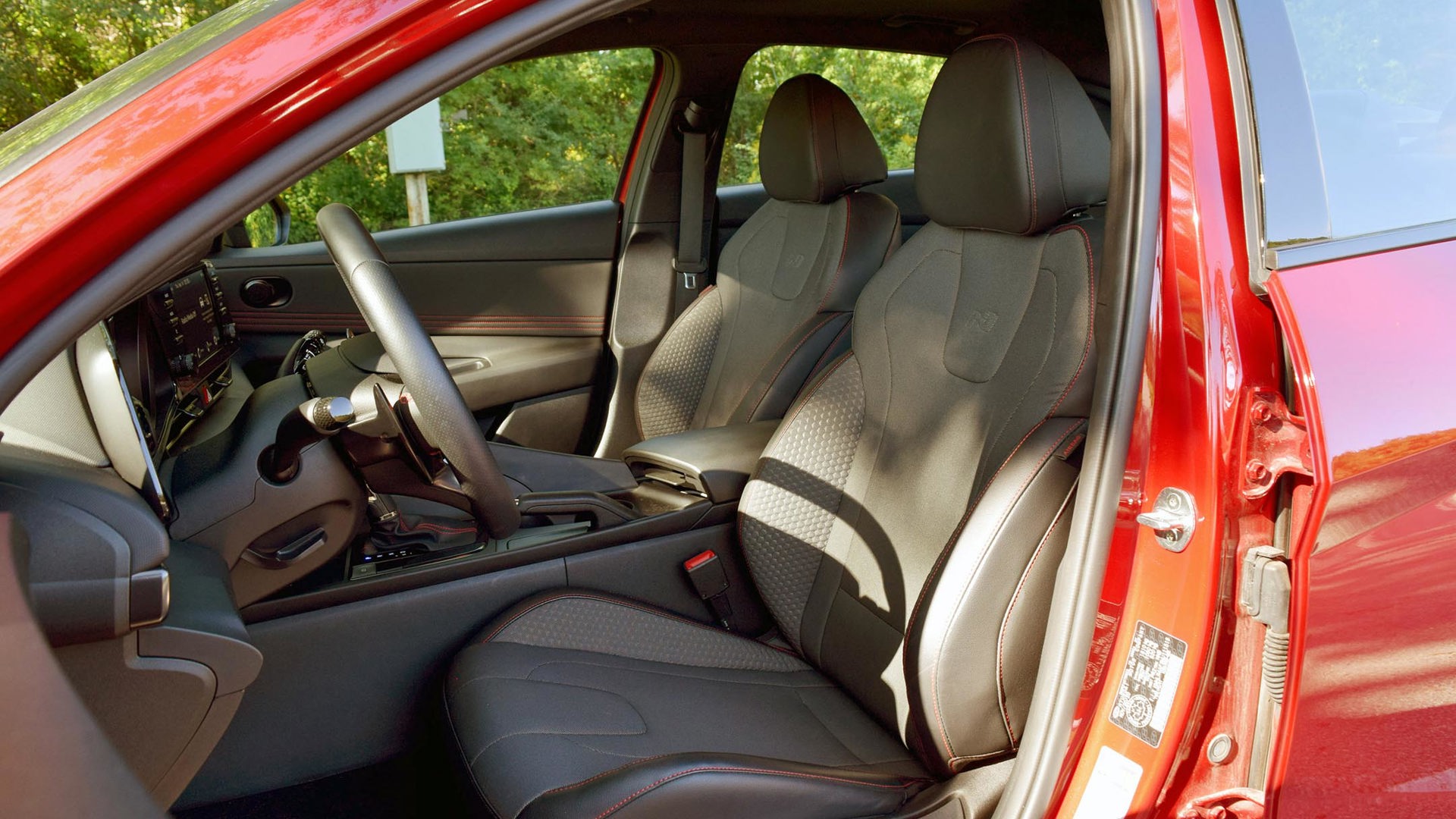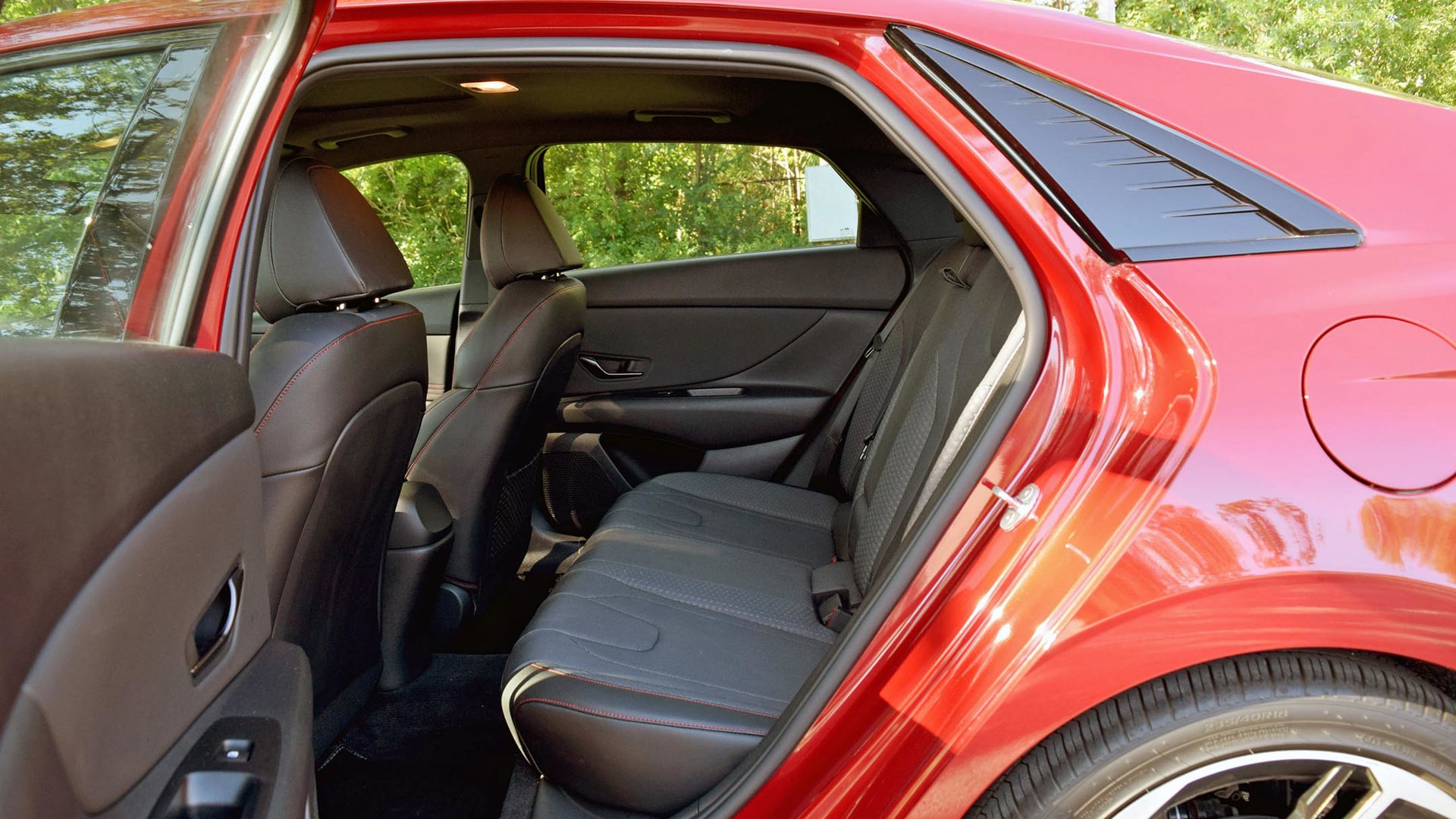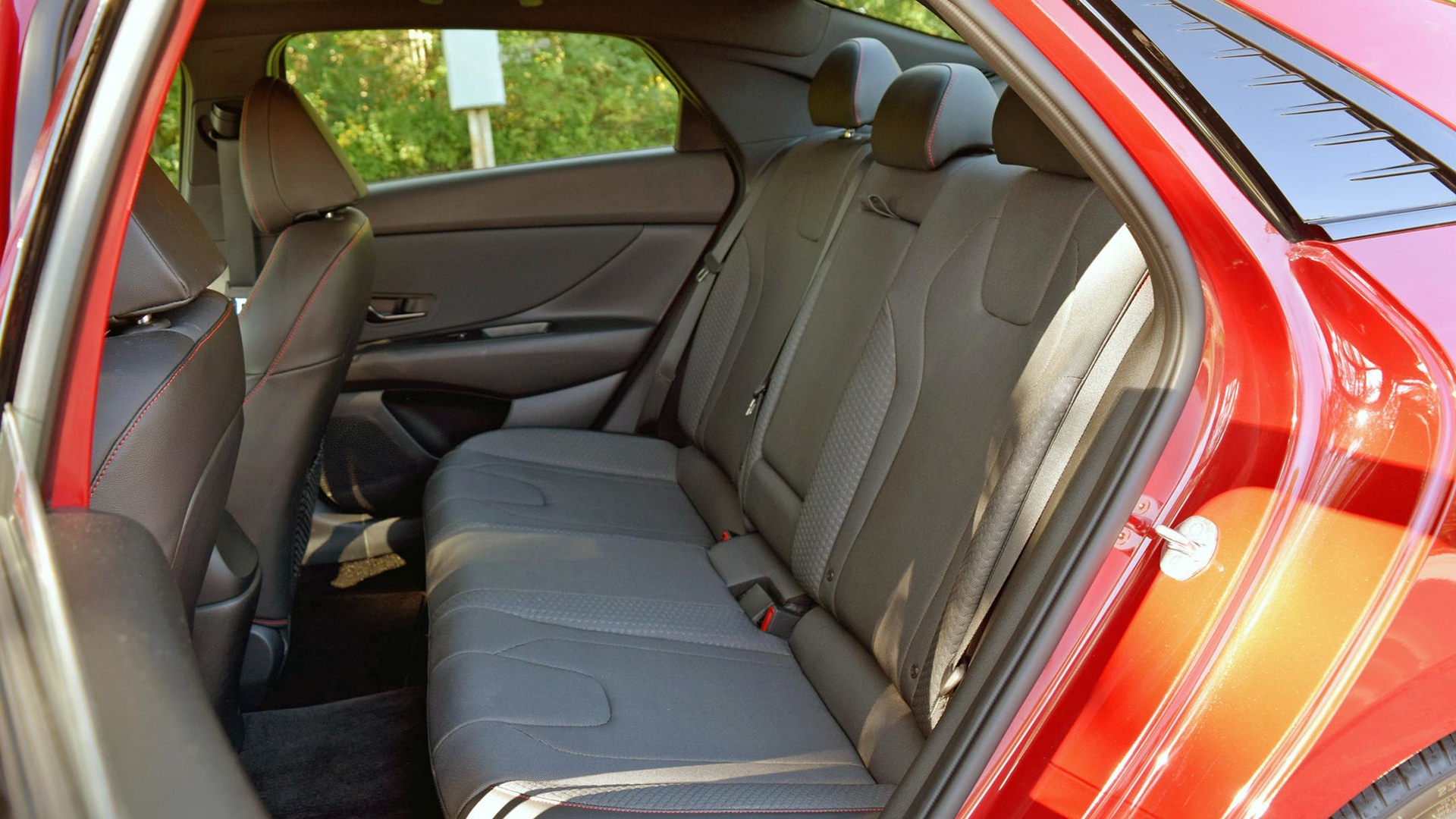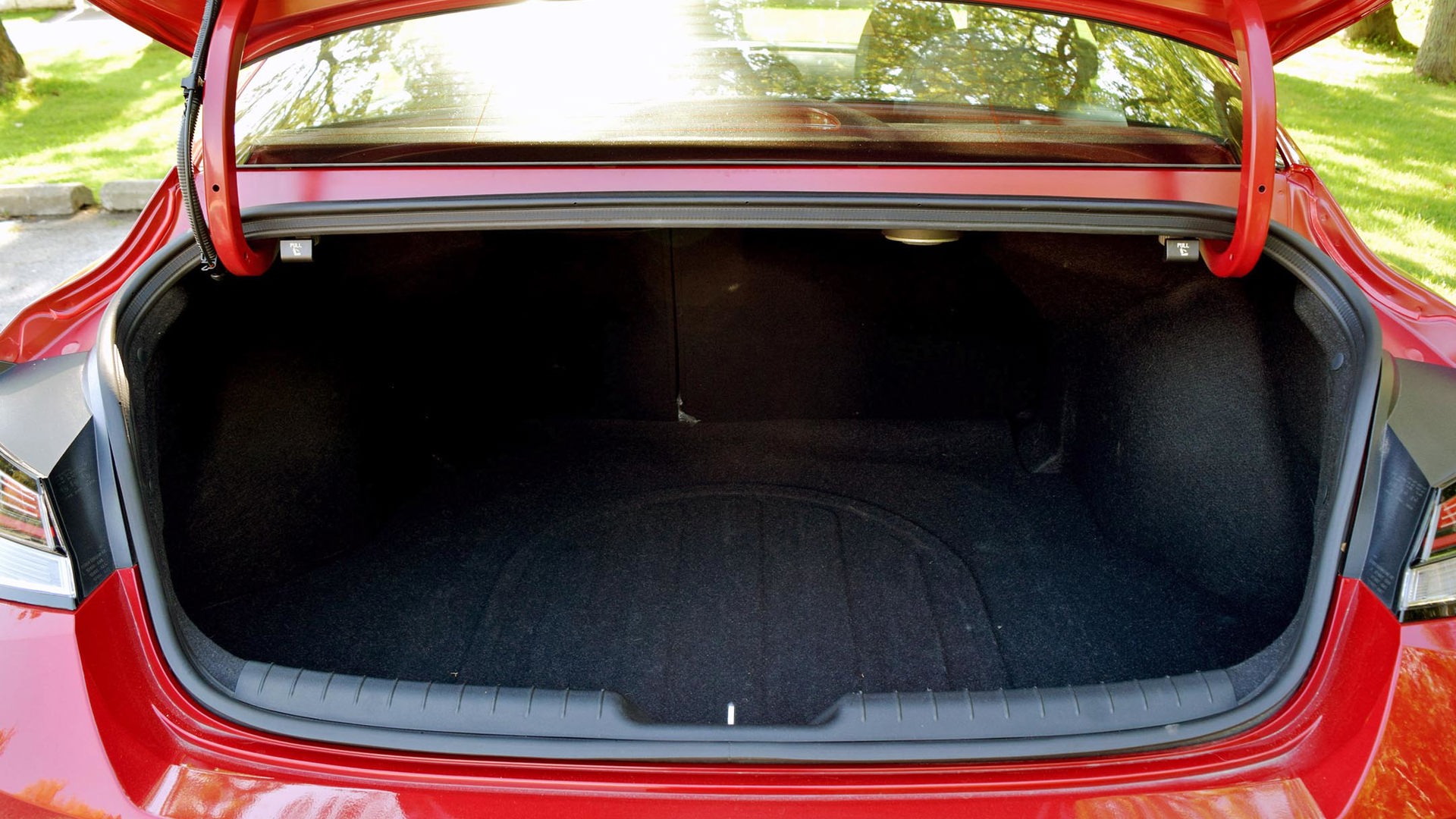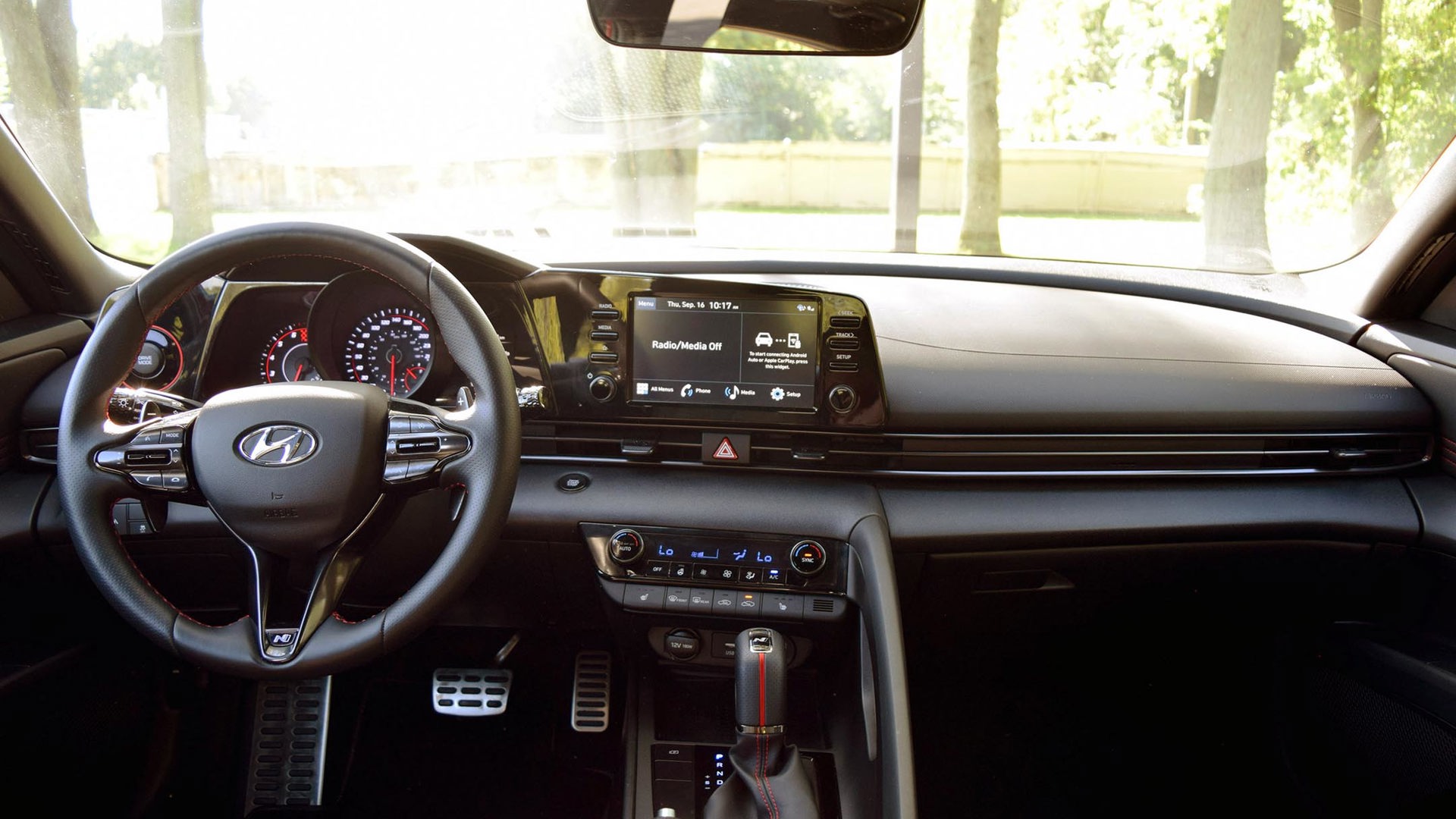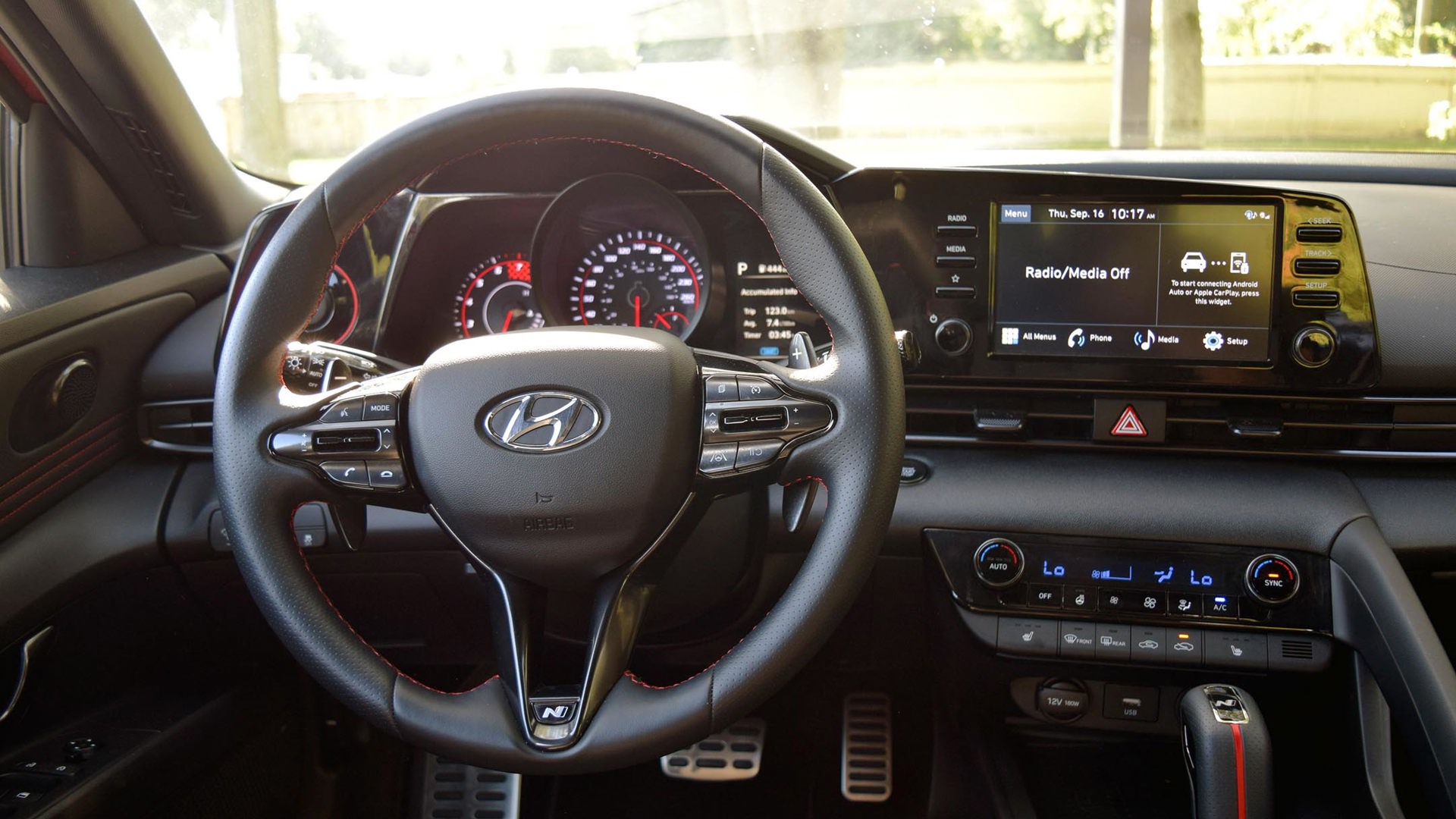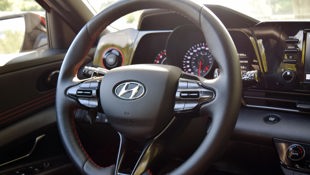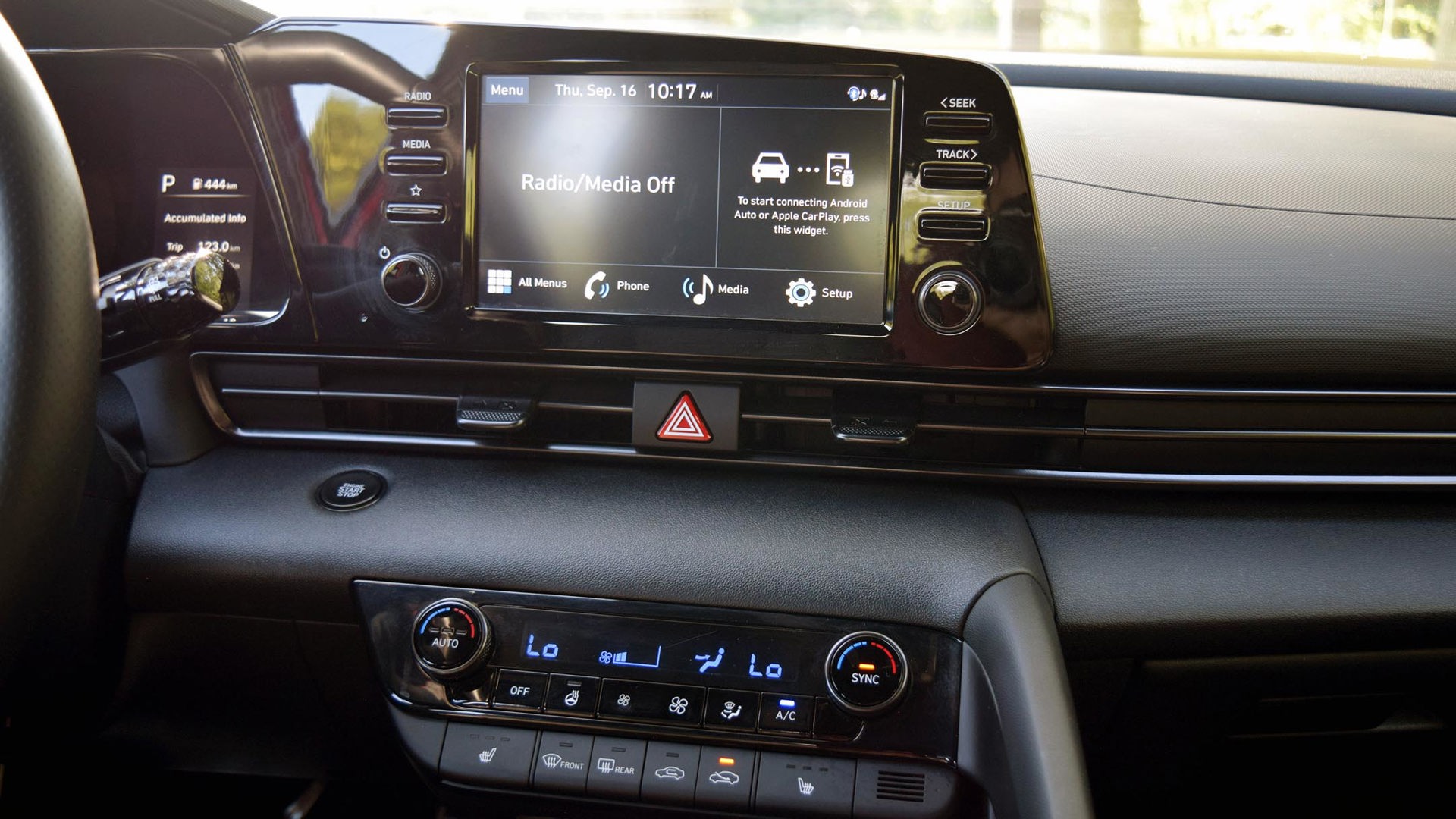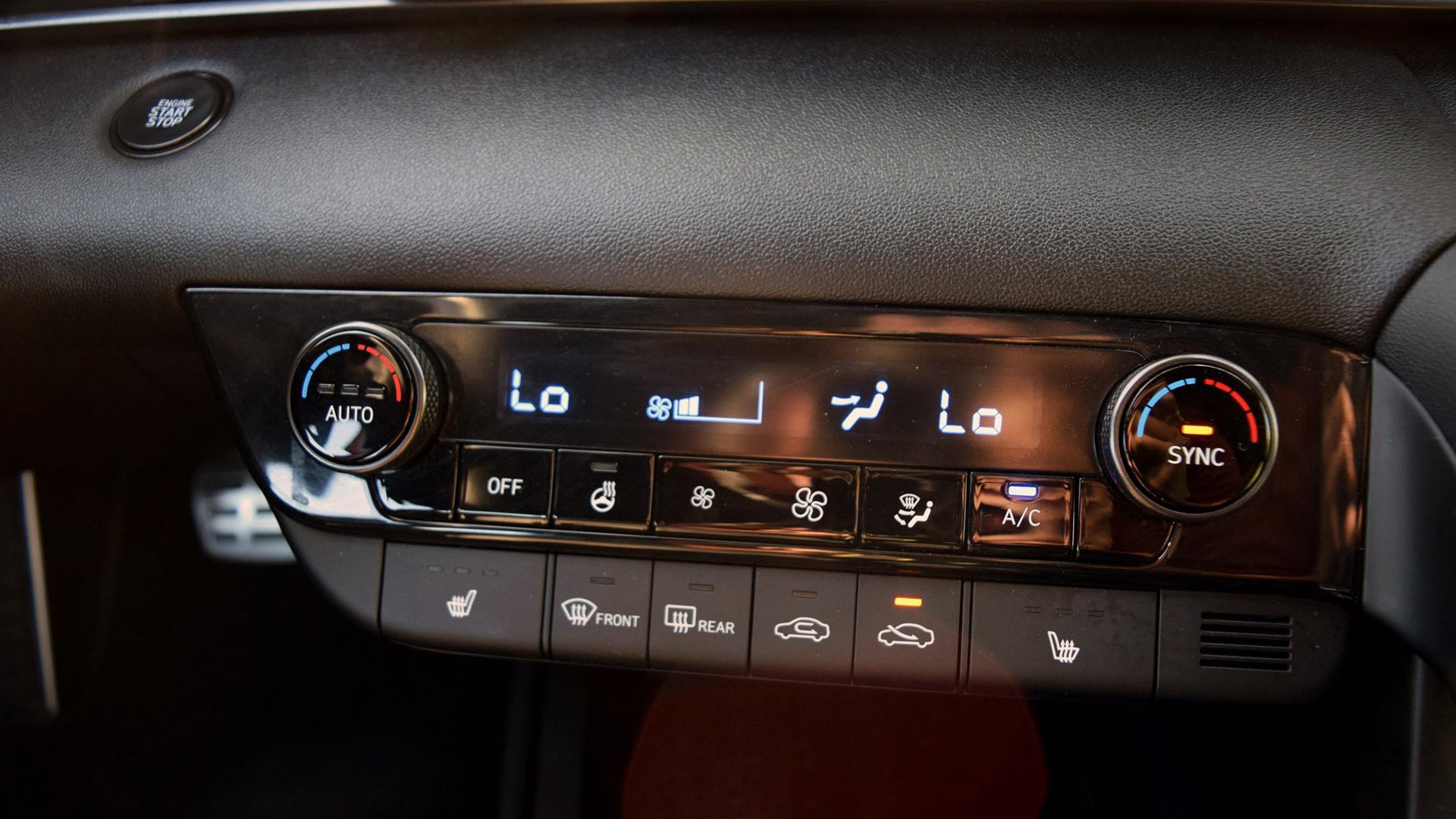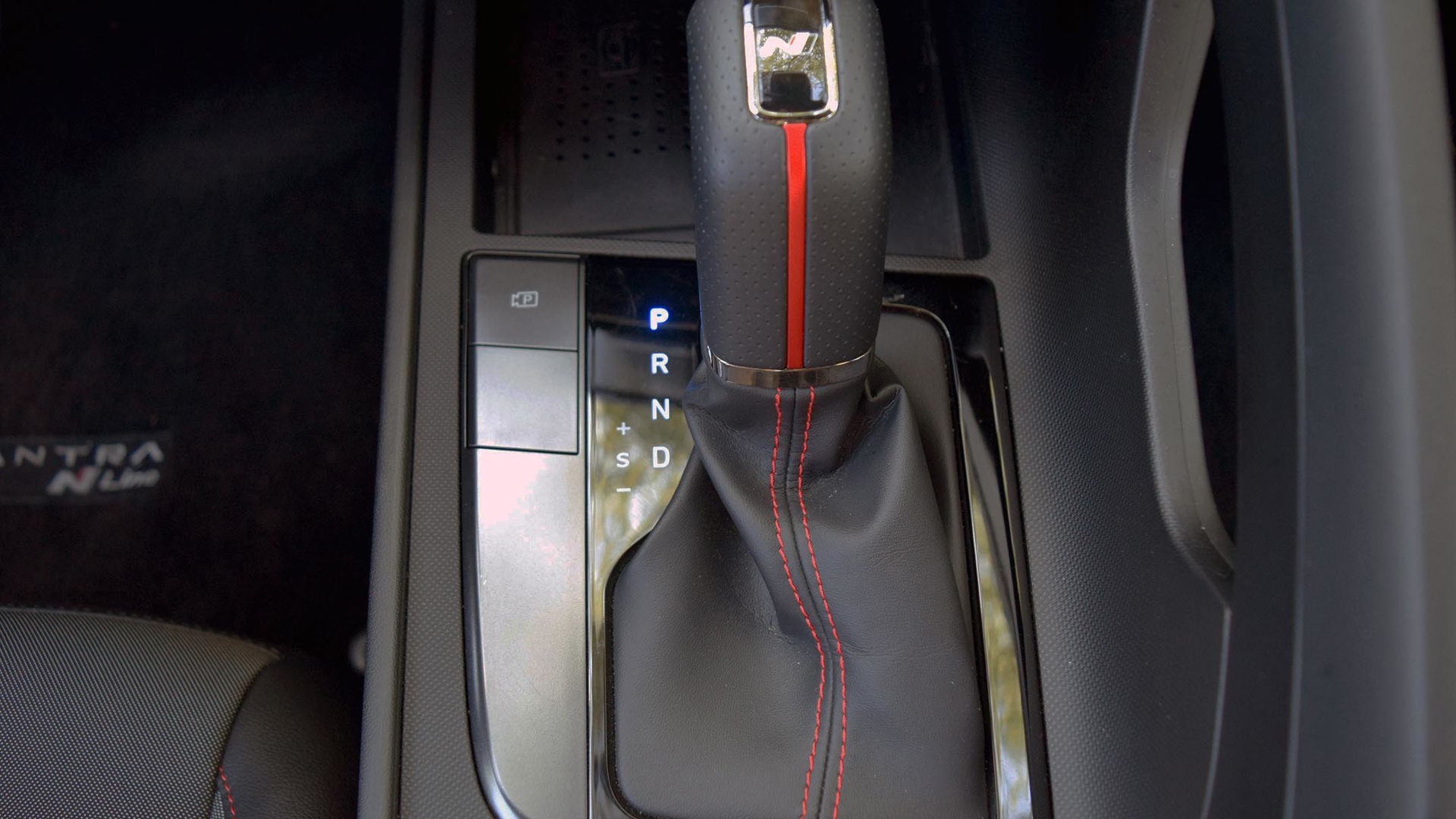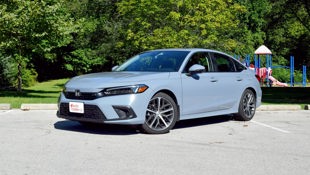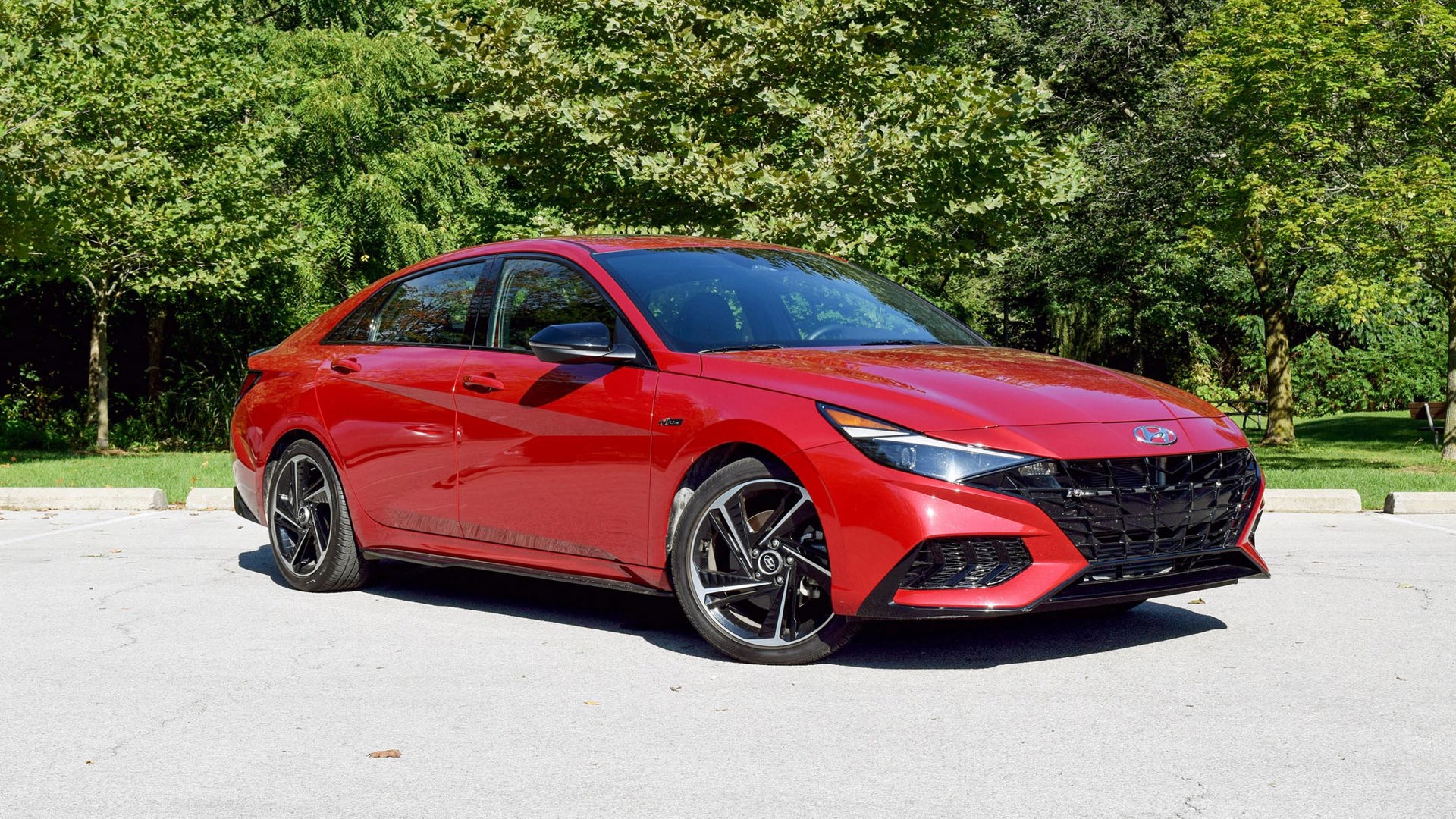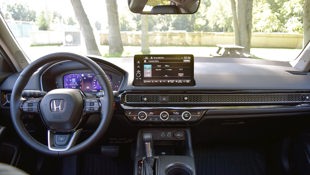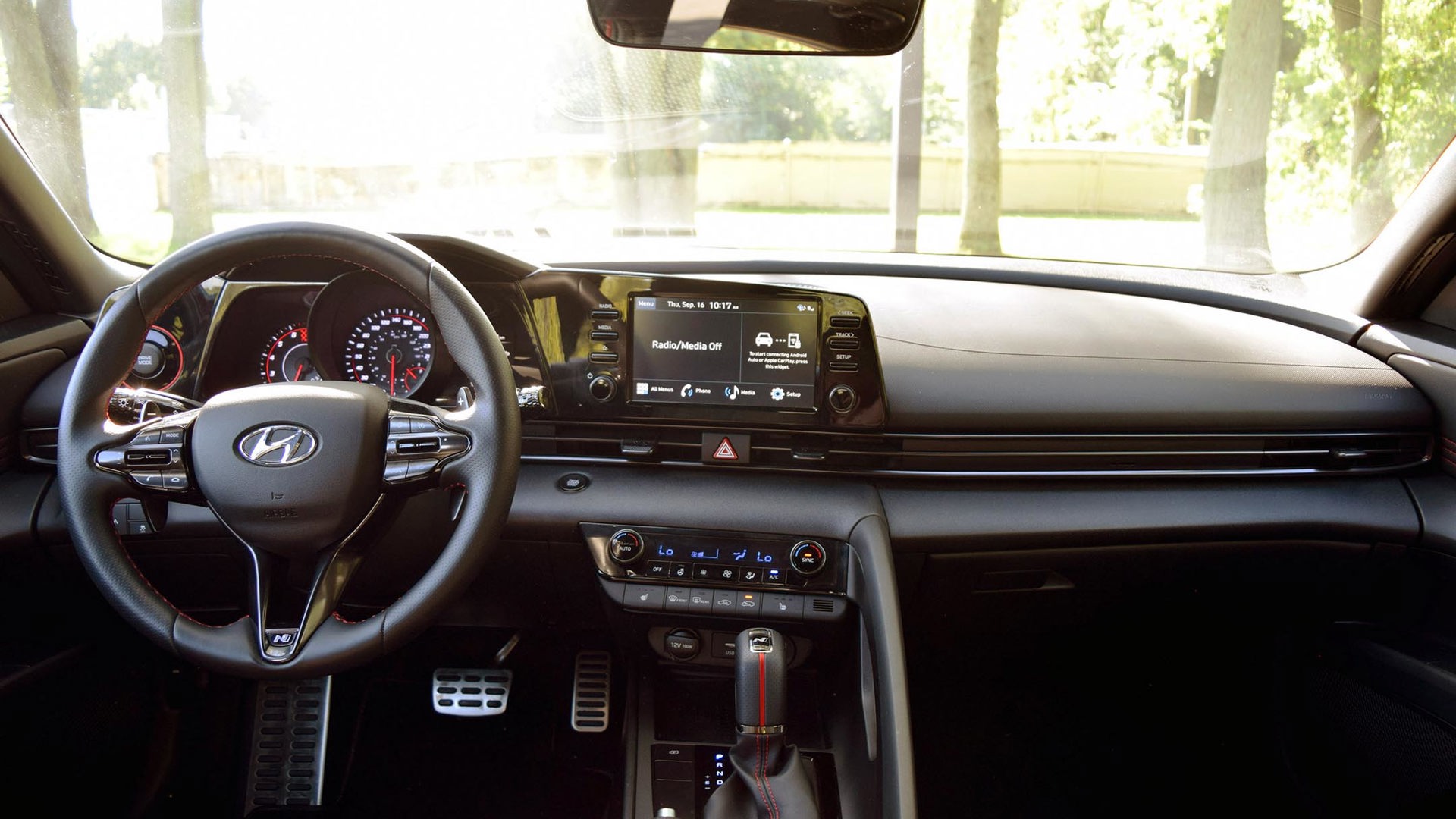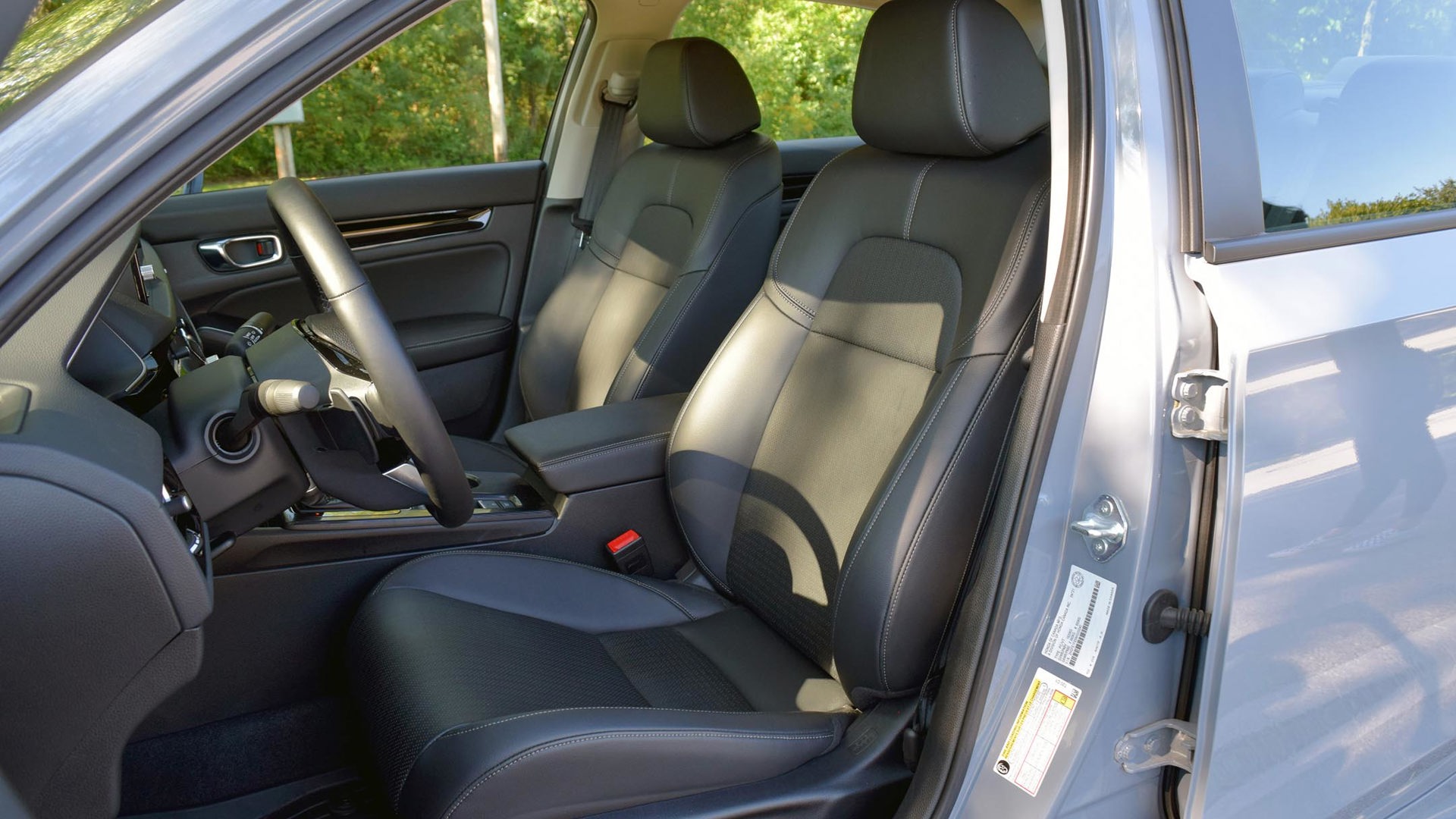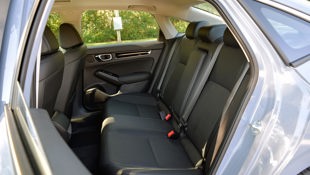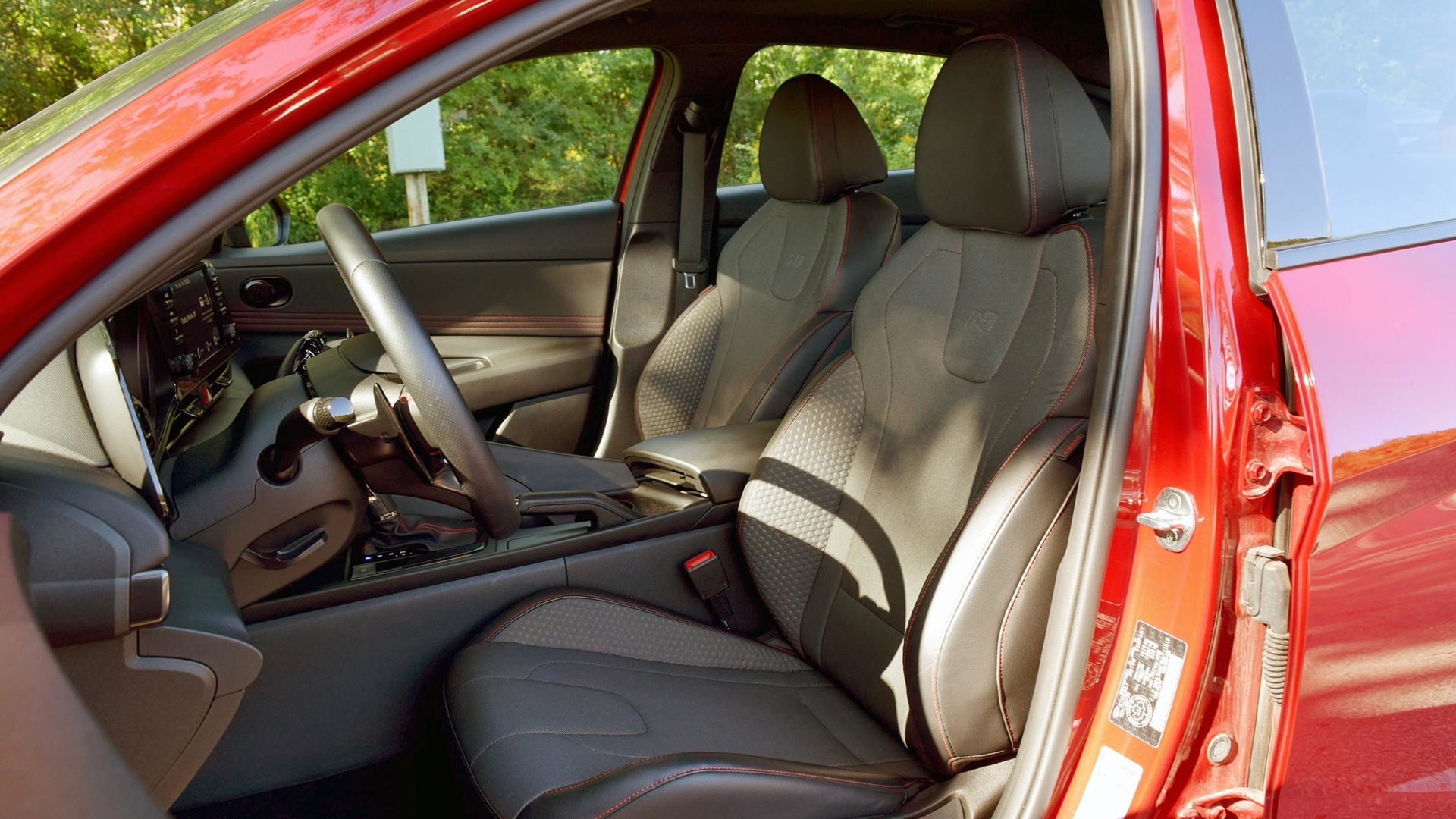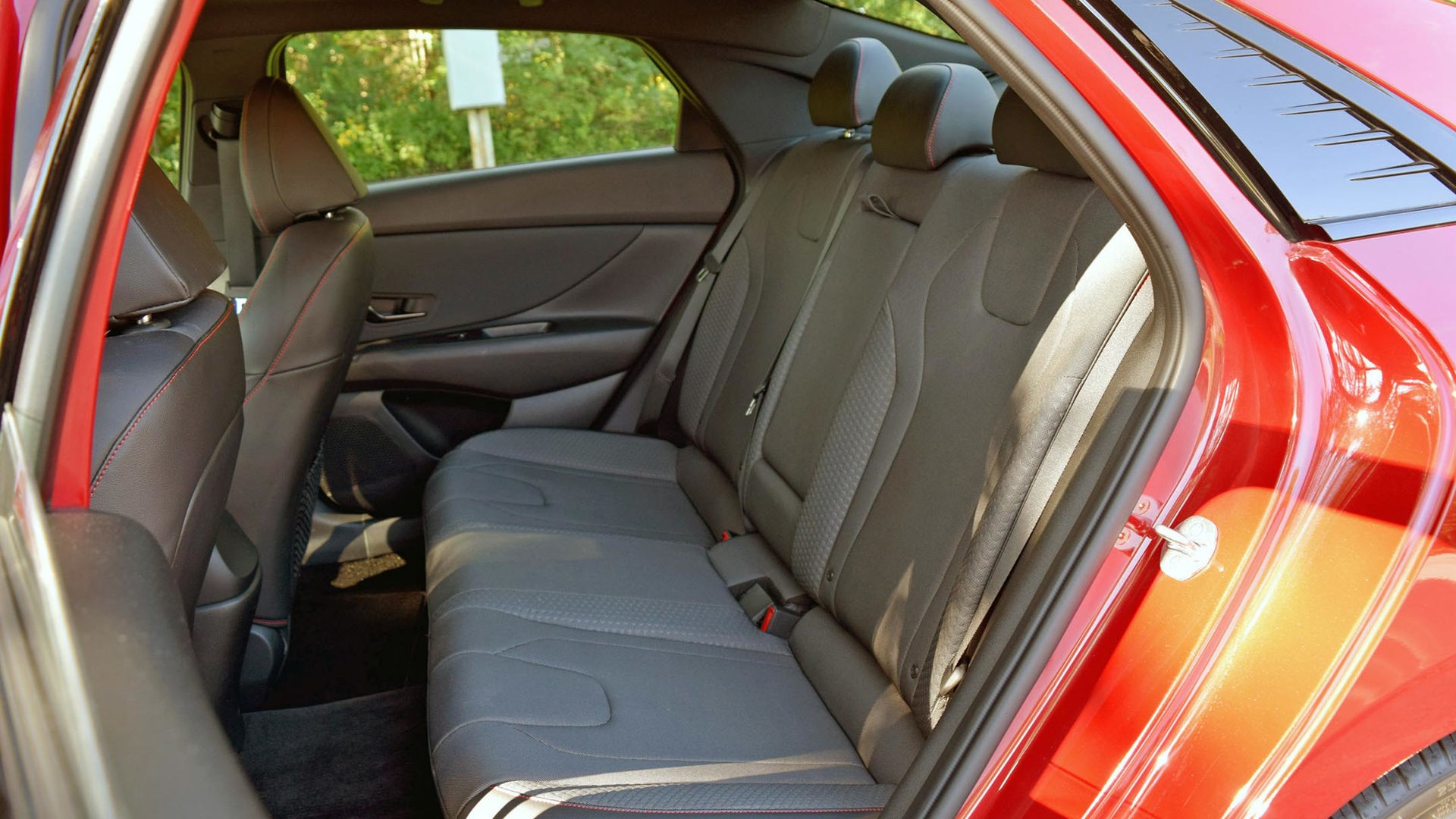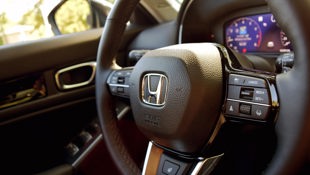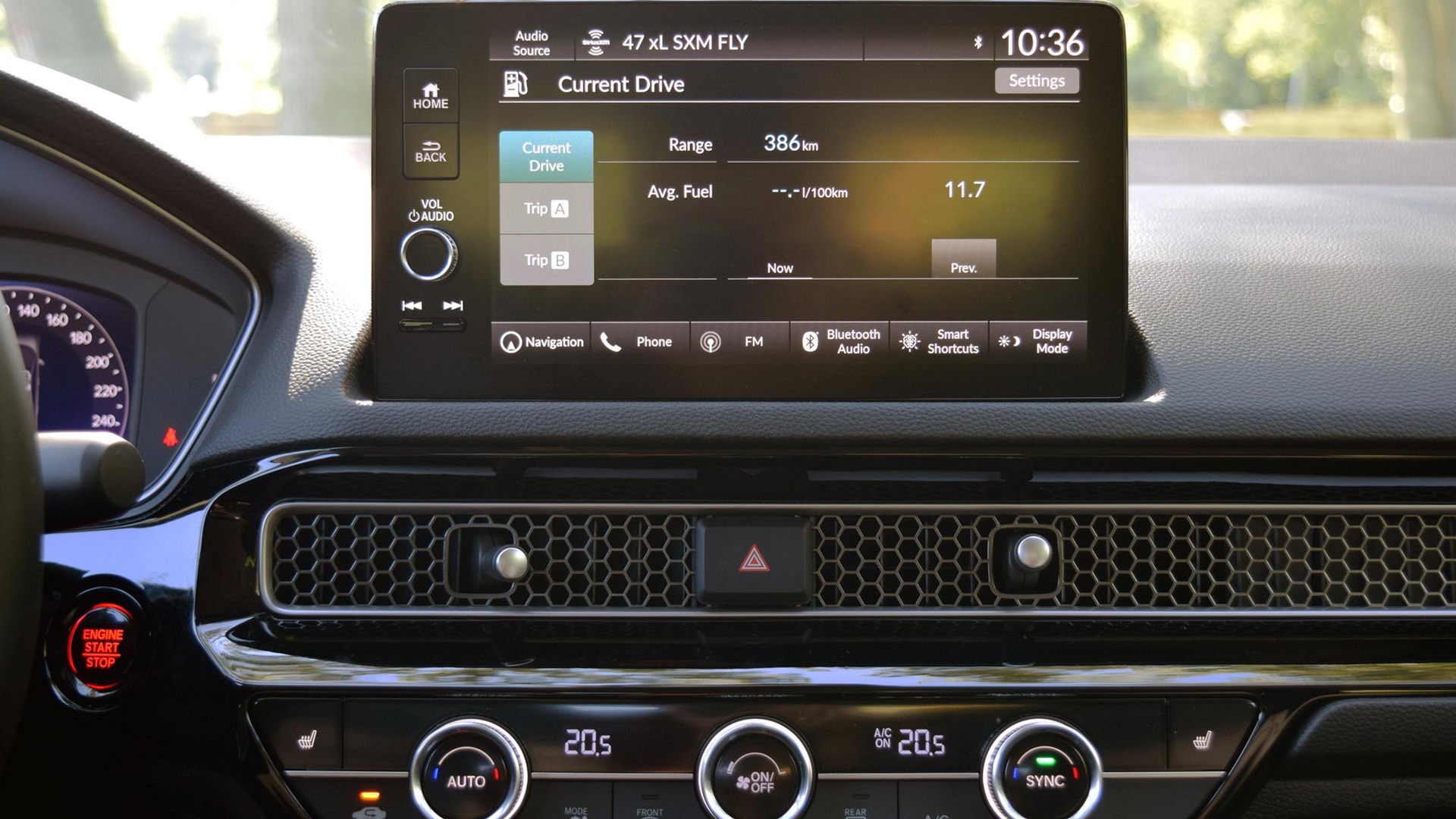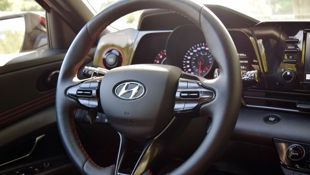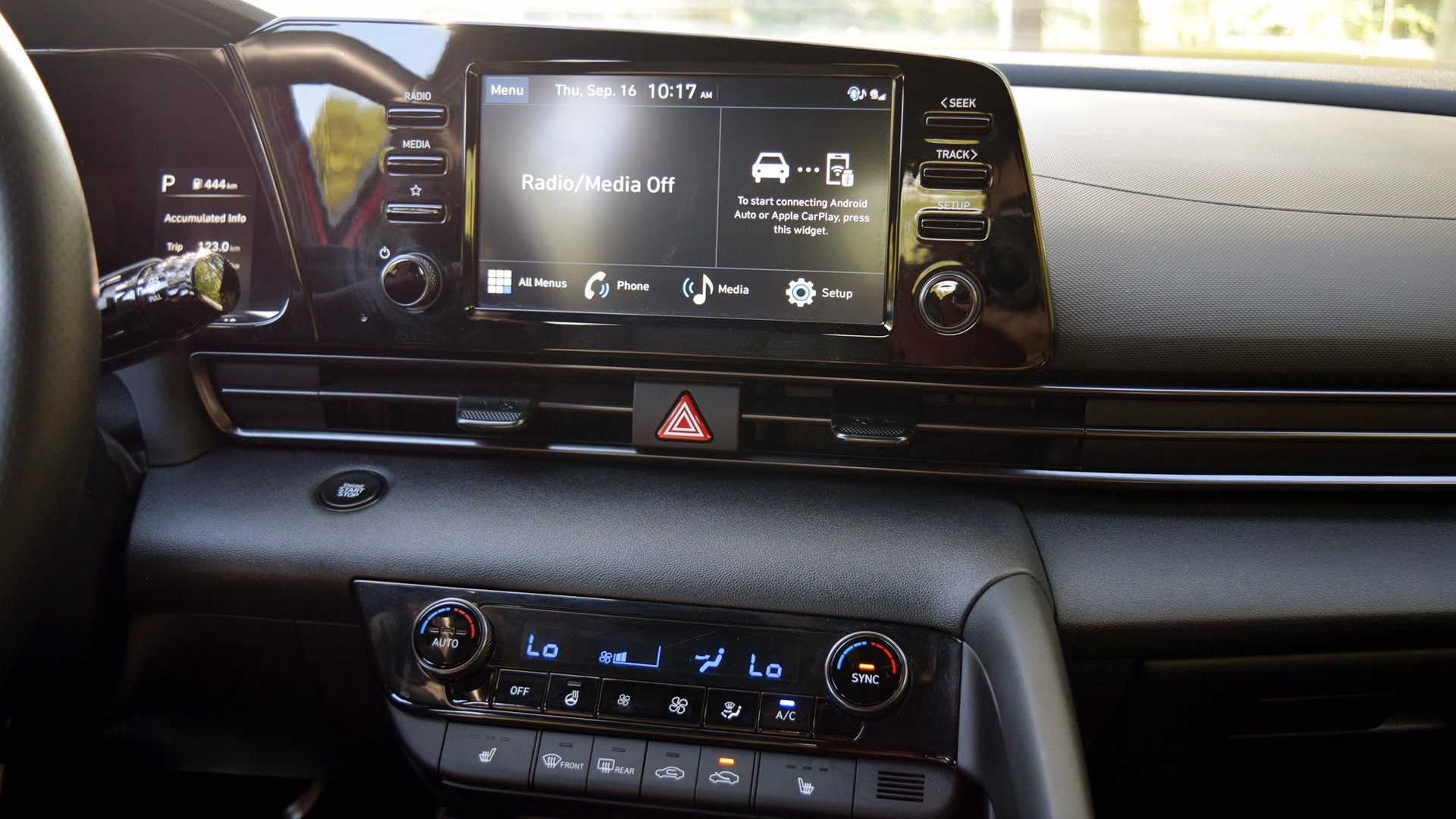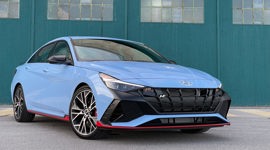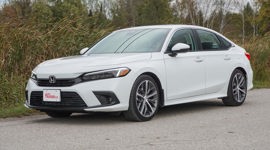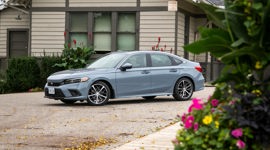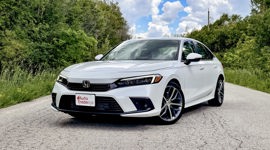Comparison Data
|
2022 Honda Civic Touring
|
2022 Hyundai Elantra N-Line
|
|---|---|
|
Engine Displacement
1.5L
|
1.6L
|
|
Engine Cylinders
I4
|
I4
|
|
Peak Horsepower
180 hp
|
201 hp
|
|
Peak Torque
177 lb-ft
|
195 lb-ft
|
|
Fuel Economy
7.6 / 6.1 / 6.9 L/100 km cty/hwy/cmb
|
8.4 / 6.6 / 7.6 L/100 km cty/hwy/cmb
|
|
Cargo Space
408 L
|
402 L
|
|
Base Price
$30,265
|
$27,699
|
|
A/C Tax
$100
|
$100
|
|
Destination Fee
$1,700
|
$1,725
|
|
Price as Tested
$32,365
|
$29,724
|
|
Optional Equipment
$300 – Paint, $300
|
$200 – Paint, $200
|
Despite the popularity of crossover and SUVs, now is not the time to count out compact cars.
It seems the crop of small sedans gets better with each passing year, offering more space, improved refinement, and fantastic value. The redesigned 2022 Honda Civic borrows a lot from the successful formula of the larger Accord, and brings a surprisingly upscale package to the beloved nameplate. The 2022 Hyundai Elantra has impressed us in the past, making it the perfect benchmark to find out whether the Civic has improved beyond a new look.
Styling
A new look is a mild way to put it. The Civic is far more attractive this year, with a smoother design compared to the edgy look of the last generation. In many ways it resembles the Accord, and the Morning Mist Metallic Blue paint finish on our tester really pops. It looks classy in almost any setting.
The Elantra, on the other hand, has a polarizing style. Distinct and unique, the design team at Hyundai infused the compact car with tons of personality through its exterior design alone. Sharp creases draw a sporty profile away from a large grille and sleek headlights. Some will love the look while others may cringe, and that split is evidence of the departure from the basic-looking compact cars of the past.
Inside, the two cars still impress, but in different ways. The Elantra feels like a technology showcase. An available digital gauge cluster pairs nicely with the large infotainment system as if to say, “Compact or not, this thing is high-tech.” Unfortunately, the rest of the cabin doesn’t feel as high-end. Material choice is average, with hard plastics and a cumbersome grab handle separating the passenger and driver seats.
Honda also has some nice screens to showcase its high-tech aptitude, but integrates the features with more grace. We especially like the HVAC arrangement, with twin LCD displays surrounding the temperature and fan speed knobs just as it’s done in the Accord. Beyond that, other elements of the interior stand out and have some practical applications. For example, the textured trim repels fingerprints, unlike piano-black plastic.
Honda Civic: 8.5/10; Hyundai Elantra: 8/10
User Friendliness
As fancy as the two interiors are, they’re relatively accessible. However, we did experience a few unfortunate bouts of bugginess with the Civic’s infotainment system, where it performed slowly or was incapable of connecting to our smartphones for Android Auto. (Both Android Auto and Apple CarPlay are standard, with the top Touring trim testing featuring wireless connections.) Otherwise, the system was simple to use thanks to its physical controls. While the media and climate controls are well laid out, a few other buttons are awkwardly placed, like the trunk release button that’s hidden low on the driver’s door and is obscured by the dashboard.
The Elantra has a significant ergonomic concern – specifically, the handle that interferes with the passenger’s access to the centre stack. Aside from that, the infotainment, HVAC adjustments, and other controls are easy to get accustomed to.
Honda Civic: 7.5/10; Hyundai Elantra: 7.5/10
Safety
These two sedans are hardly separate in terms of safety features. The Honda Civic offers all of its safety equipment from the most basic trim model, meaning every one gets lane-keeping assistance, adaptive cruise control, blind-spot monitoring, and forward collision warning with automatic emergency braking. The Insurance Institute for Highway Safety (IIHS) has awarded the 2022 Civic the Top Safety Pick+ rating, which is the highest possible.
The Elantra sits just a notch below that, with a Top Safety Pick rating from the IIHS. It offers the same technology and driver assists as the Civic, but not as standard equipment.
Honda Civic: 8/10; Hyundai Elantra: 7/10
Features
Shoppers unaware of the sheer value of compact cars need a reality check. These two vehicles offer trunk-loads of features all without breaking the bank. Heated seats and steering wheels, dual-zone climate control, digital gauge clusters, and wireless phone chargers are all available throughout these two vehicles’ lineups. The only items that separate these compacts from luxury rides are technologies like head-up displays, variable suspension settings, and ventilated seats.
The Elantra has a tiny bit more versatility with its packaging. Basic models cover the mainstream market, while hybrids and sporty models cater to niches with specific features. The Elantra N Line, for example, includes aluminum pedals, a throaty exhaust note, and a completely different independent rear suspension system than the rest of the lineup. Civic shoppers have Si and Type R models to look forward to, but no ultra-efficient gas-electric variant.
Honda Civic: 8.5/10; Hyundai Elantra: 8.5/10
Practicality
These cars are far from compact in terms of practicality, with more than 400 L of cargo space in their trunks. The Civic offers a tiny bit more than the Elantra, with 419 L in LX, EX, and Sport trims, while the Touring model packs 408 L. The Elantra makes do with 402 L.
The Elantra counters with slightly more passenger room. There’s a total of 2,814 L of passenger volume compared to a maximum of 2,803 L in the Civic, while the Hyundai boasts a little more rear-seat space compared to the Civic. To be fair to the Honda, the front seats are very spacious and comfortable.
Honda Civic: 8/10; Hyundai Elantra: 8/10
Comfort
The well-upholstered seats in the Civic Touring feel a tier above what we’ve come to expect from the Japanese automaker over the years. They set the tone for the rest of the vehicle, as it feels far more refined and grown up than before. It’s not too noisy, and the ride quality is a highlight as the compact car settles quickly after any jostling bumps or road imperfections.
Since we had an Elantra N Line on hand for testing, we have to report that it is a much louder vehicle, but on purpose. The exhaust note is bassy, silly, and fun – more so than the reserved mainstream model. The suspension is also a bit harsher, which impacts ride quality. Buyers of the non-N Line models will find a far more comfortable ride.
Honda Civic: 8/10; Hyundai Elantra: 7.5/10
Driving Feel
Of course, the Elantra N Line’s benefits come with its performance, so while non-N Line models are more comfortable and smooth, they’re a bit boring to drive. The N Line is engaging, with a superb steering feel and a responsive chassis. The seven-speed dual-clutch automatic transmission swapped gears with a sporty snap, which is always appreciated.
The Civic is far more enjoyable than it has any right to be, considering sporty Si and hardcore Type R models are on the way with an emphasis on performance and track-ready capability. The Civic Touring we had on hand reacted well to steering input and was confident in almost every driving situation. While not sporty, it was a pleasant partner in all kinds of commutes.
Honda Civic: 8.5/10; Hyundai Elantra: 7.5/10
Power
The Honda Civic arrives with familiar hardware. All but the Touring trim feature a 2.0L four-cylinder engine with 158 hp and 138 lb-ft of torque. The Touring trim – as well as the forthcoming Si model – uses a 1.5L turbocharged four-cylinder that makes 180 hp and 177 lb-ft of torque. The Civic Si, meanwhile, is rated for 200 hp and 192 lb-ft of torque. It’s paired with a continuously-variable transmission (CVT) here to transfer power to the front wheels.
Despite a general distaste for the way CVTs perform, the Civic felt perfectly capable when it came to keeping up with traffic, cruising on the highway, and even committing to passes. A few drive modes help customize the experience further, with a new sport mode that sharpens throttle response.
Standard Elantra models feature a 2.0L four-cylinder engine and a CVT, with output rated at 147 hp and 132 lb-ft of torque. In our experience, the motor sounds unimpressive on paper, but the transmission does an excellent job of keeping the vehicle feeling relatively lively. The Elantra N Line takes a different approach under the hood, with a 1.6L turbocharged four-cylinder engine and a dual-clutch transmission. The engine delivers 201 hp and 195 lb-ft of torque. It’s punchy and capable, feeling far more entertaining and confident than the motor found in the standard model.
Shoppers that like the looks and packaging of the Elantra but want to save on fuel can also opt for the hybrid, which uses a 1.6L four-cylinder engine along with an electric motor and CVT to deliver 139 hp and 195 lb-ft of torque.
Honda Civic: 8/10; Hyundai Elantra: 8/10
Fuel Economy
When equipped with the 2.0L engine, the Civic is rated for 7.7 L/100 km in city driving conditions, 6.0 on the highway, and 6.9 combined. The more powerful turbo motor features the same combined rating of 6.9 L/100 km, but does slightly worse in the city and around town. We found it surprisingly easy to keep fuel consumption low despite driving in a variety of conditions during our week testing it.
The Elantra with its 2.0L engine is rated for 7.6 L/100 km in the city, 5.7 on the highway, and 6.7 combined. The N Line trades fuel consumption for fun, returning 8.4 L/100 km in the city, 6.6 on the highway, and 7.6 combined.
Honda Civic: 7.5/10; Hyundai Elantra: 7.5/10
Value
Hyundai drives a hard bargain by offering the Elantra for a mouth-watering starting price of $19,724 including a non-negotiable freight charge of $1,725 but before tax. It’s a bit sparse of features but includes heated front seats, and Android Auto and Apple CarPlay connections. The Preferred trim adds a few more nice features including a heated steering wheel, blind-spot monitoring and keyless entry to go with its $23,724 asking price. The fully loaded Ultimate model is $27,424, and comes with just about every feature you could want in the segment. The N Line, meanwhile, comes in at $29,424 before tax.
The 2022 Honda Civic’s starting price is quite a bit more than $20,000. The base LX model has a $26,165 asking price, including a $1,700 freight fee. It, too, comes with Android Auto and Apple CarPlay, and heated front seats, but includes a full array of driver aids including adaptive cruise control and lane-keeping assistance. The EX model is an extra $2,300 and adds dual-zone climate control, a heated steering wheel, and a sunroof. The Sport model is just $1,100 from the EX model and adds larger wheels and paddle shifters, while the fully-loaded Touring model costs $31,965.
Honda Civic: 8/10; Hyundai Elantra: 8.5/10
The Verdict
The Honda Civic has seen competitors come and go, and while the last generation was perfectly competitive, this new one raises the bar. With excellent interior styling, a fuel-friendly powerplant and a long list of standard features, it’s our pick between these two segment-leading small sedans.

